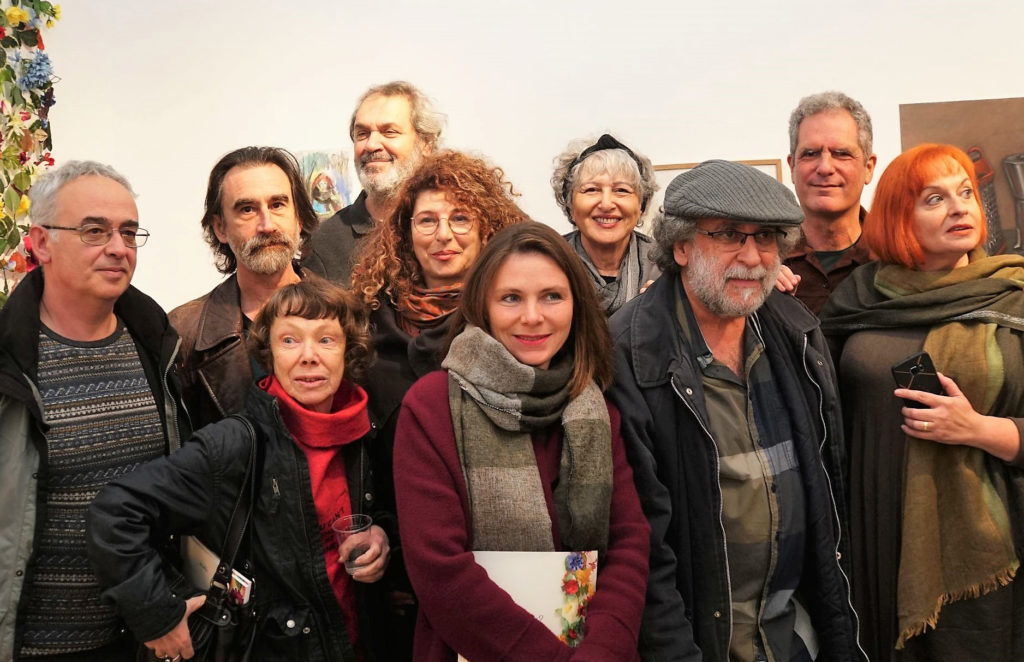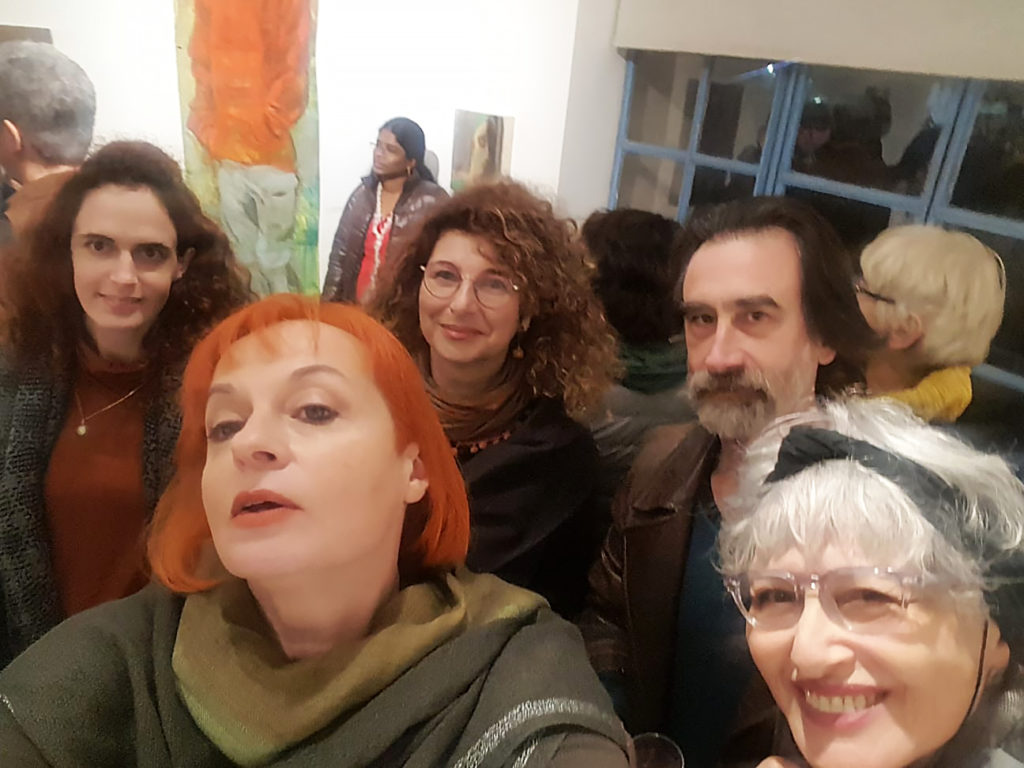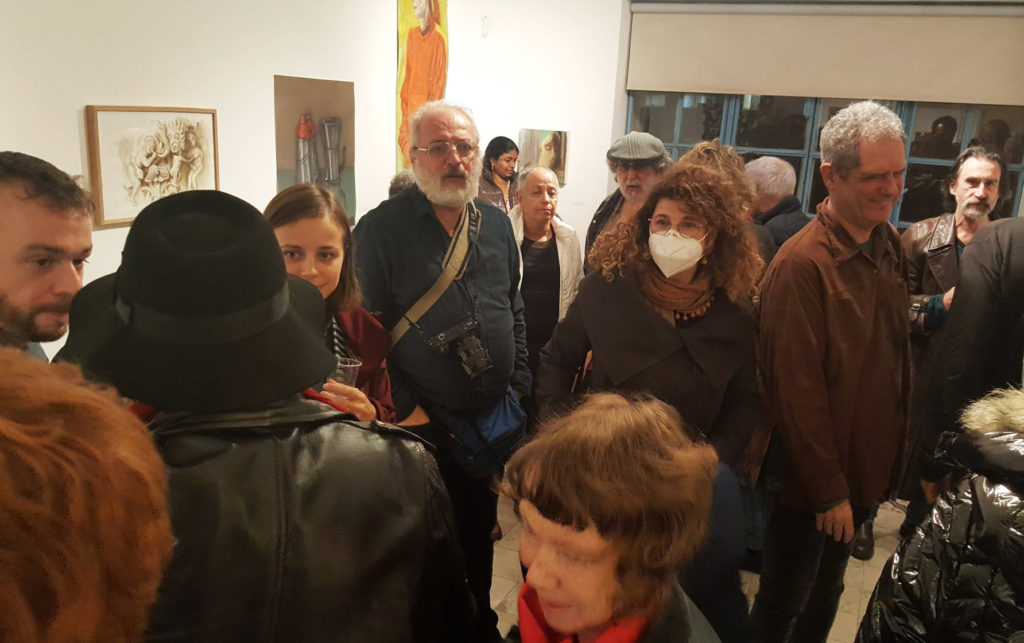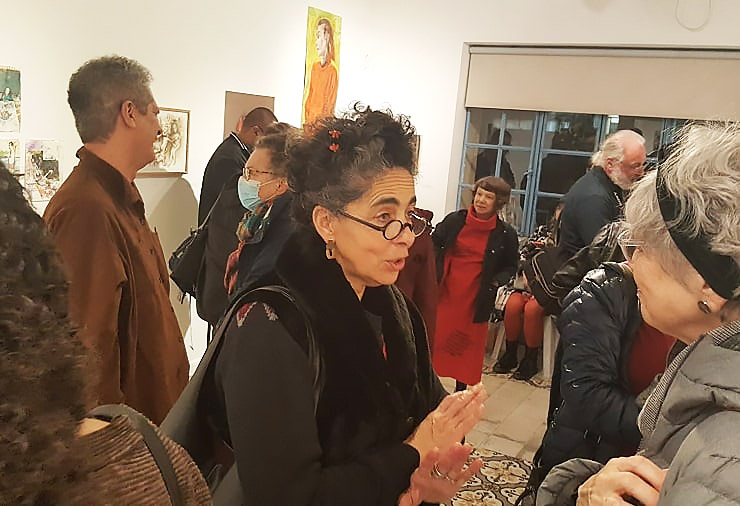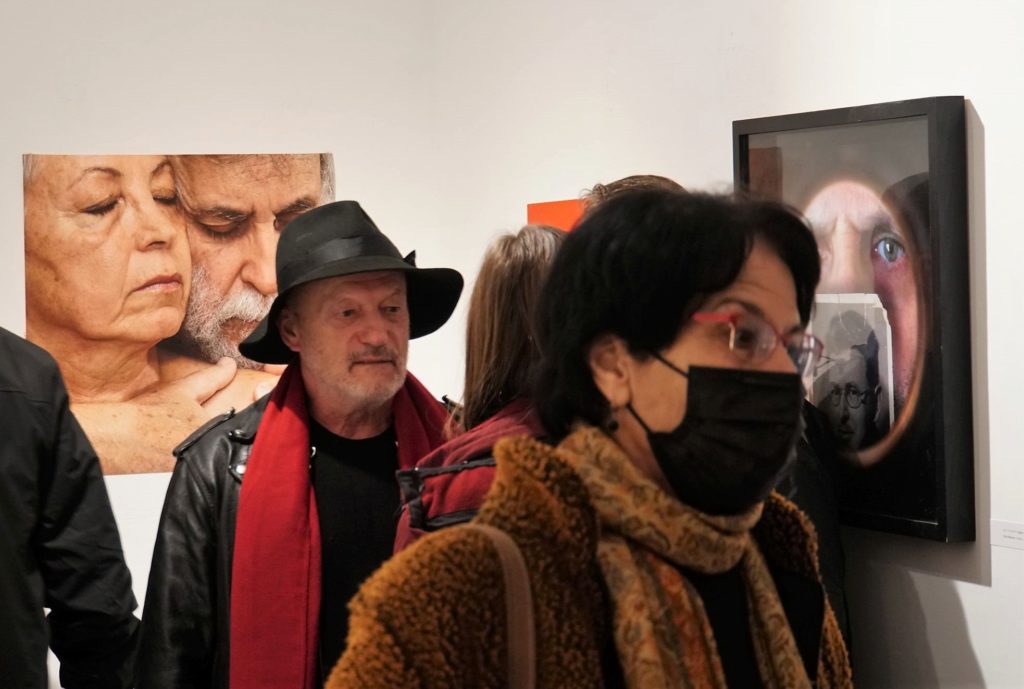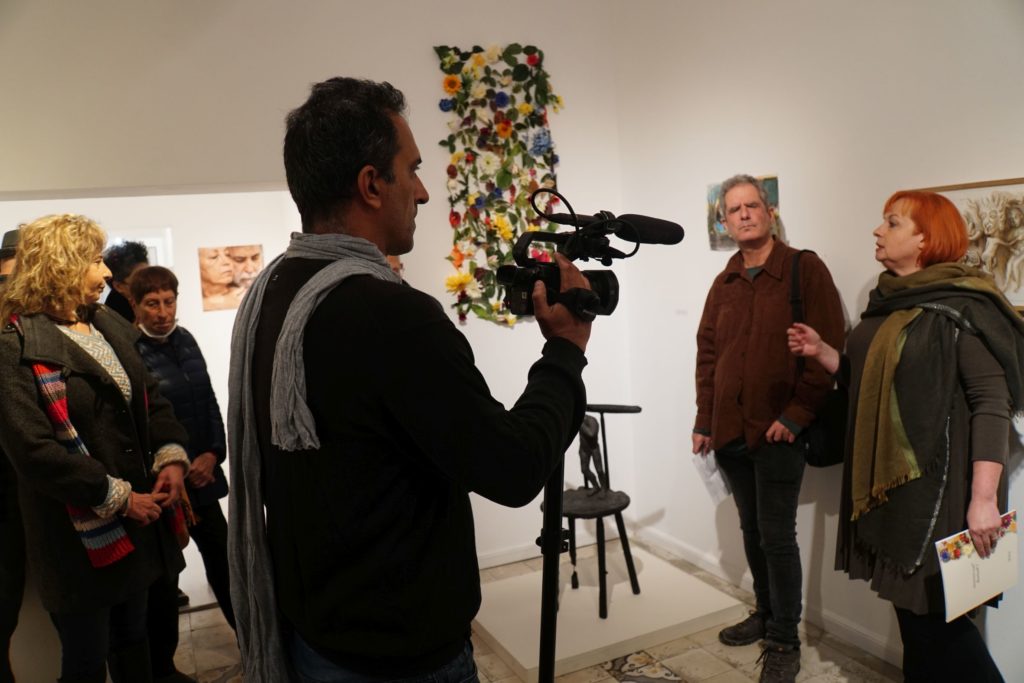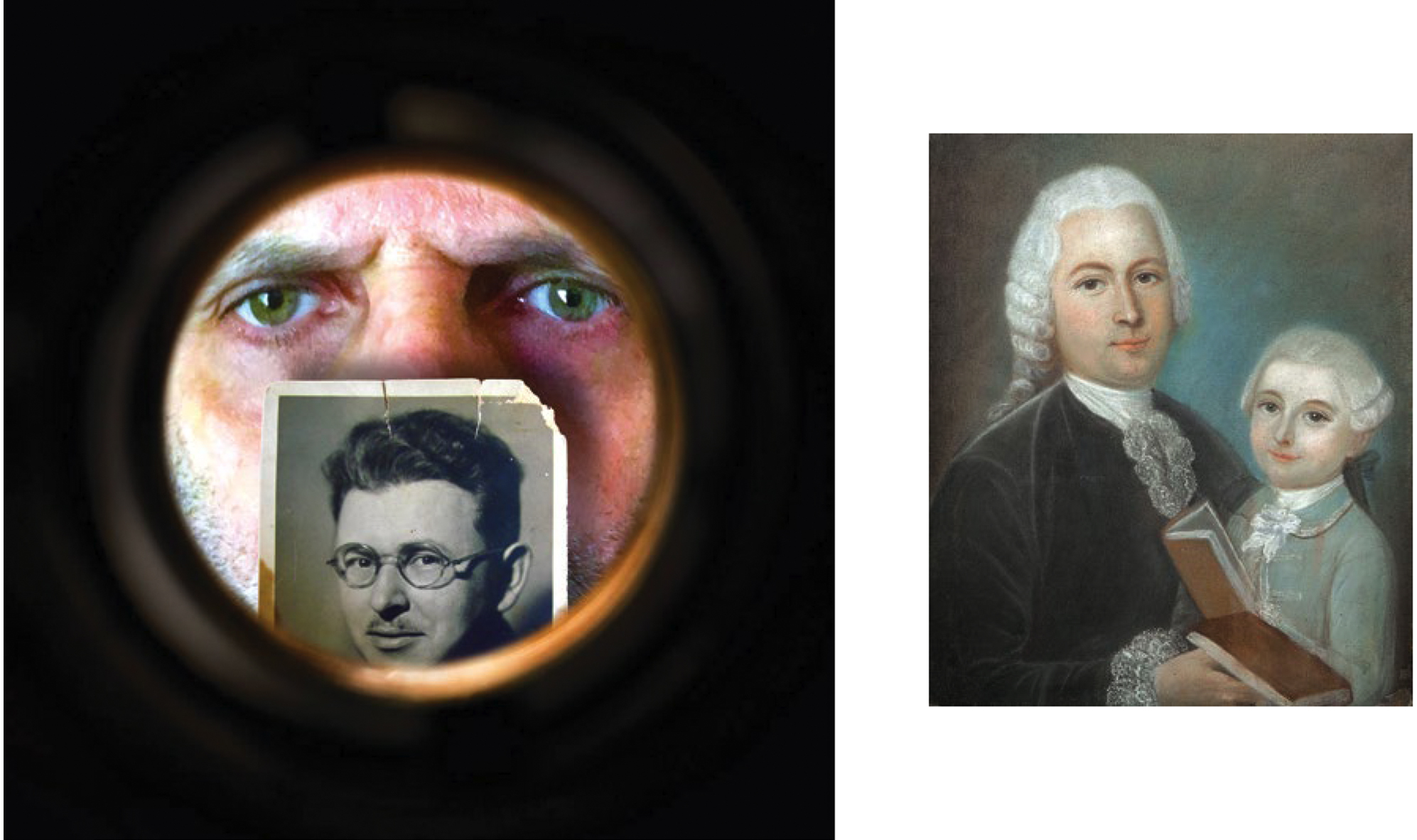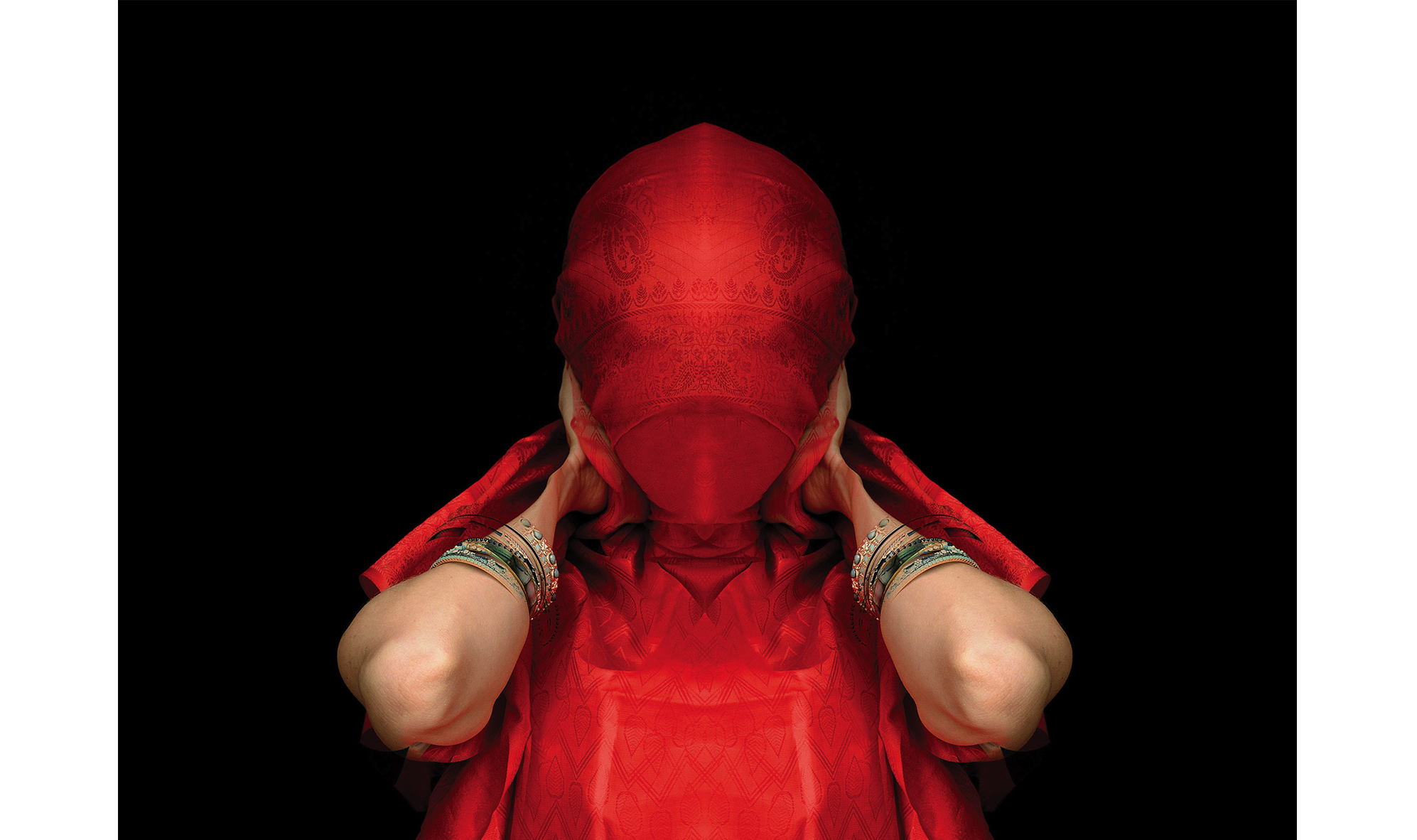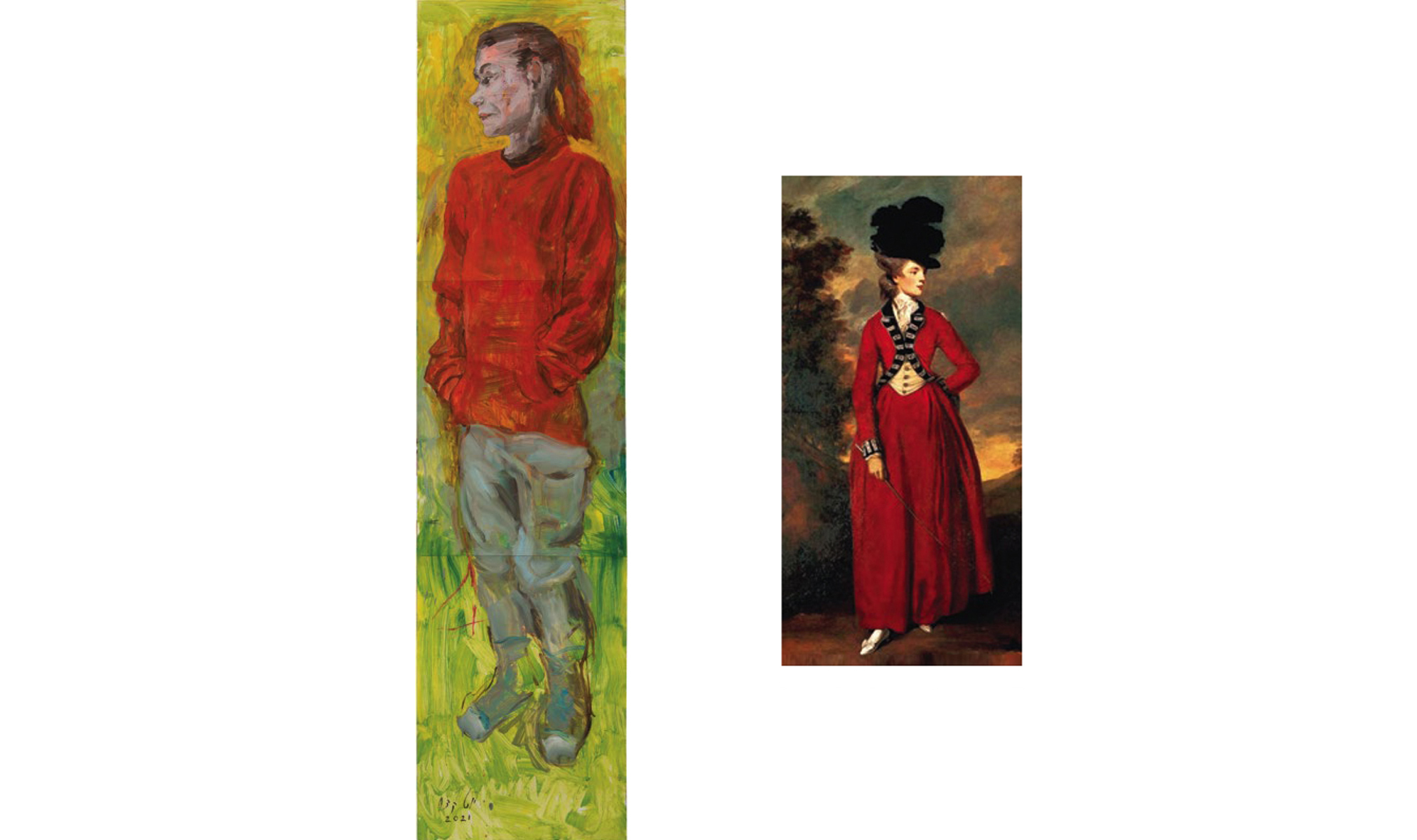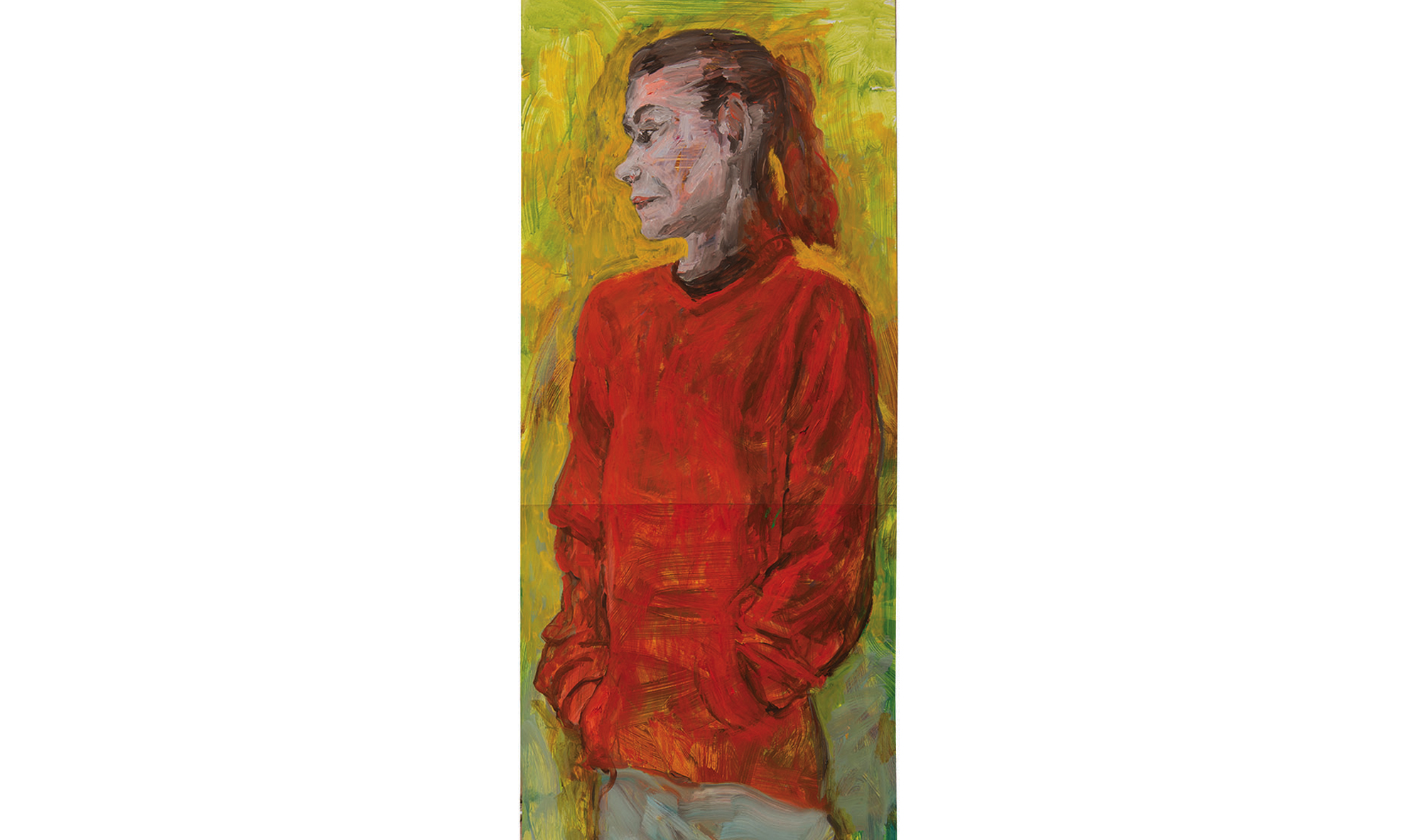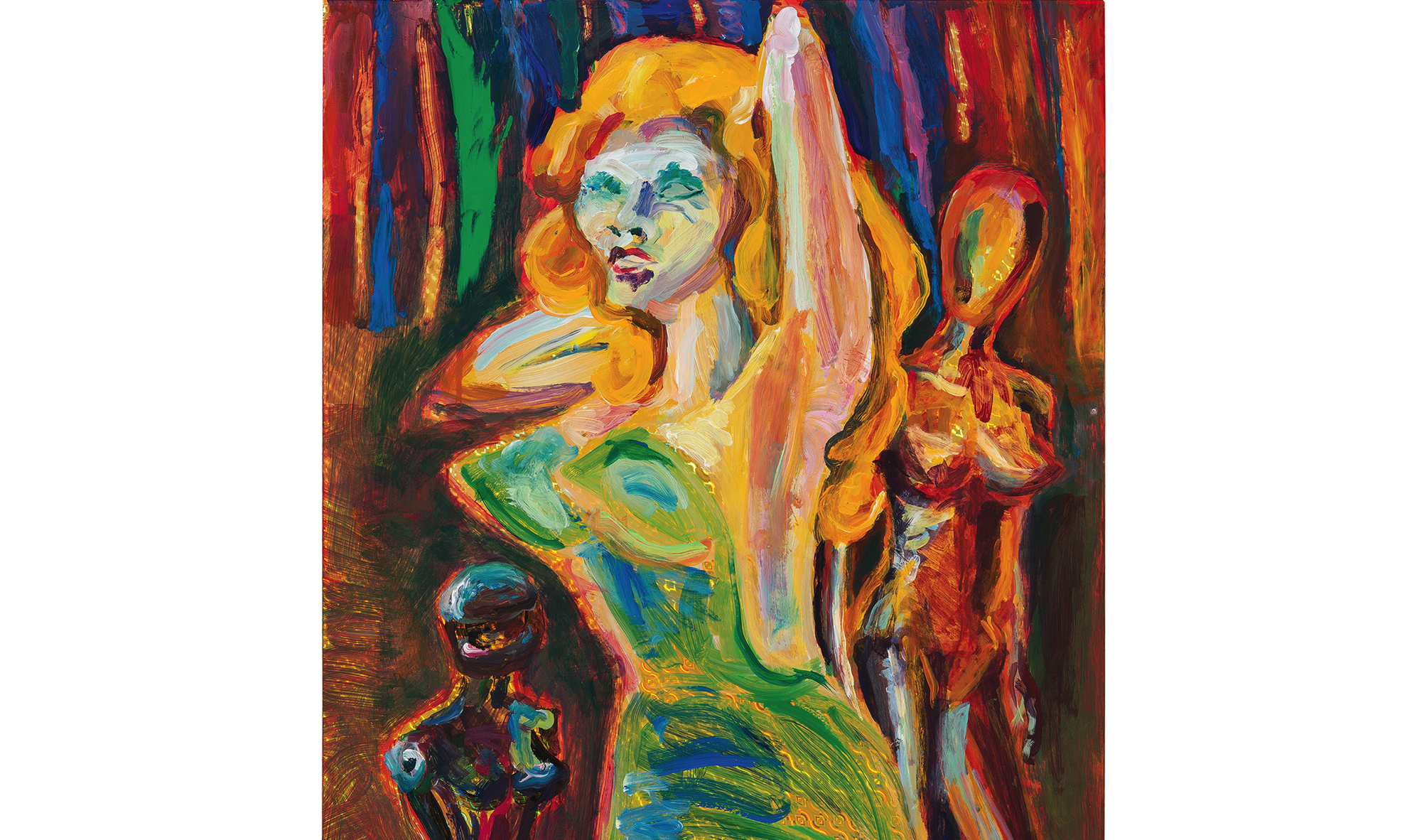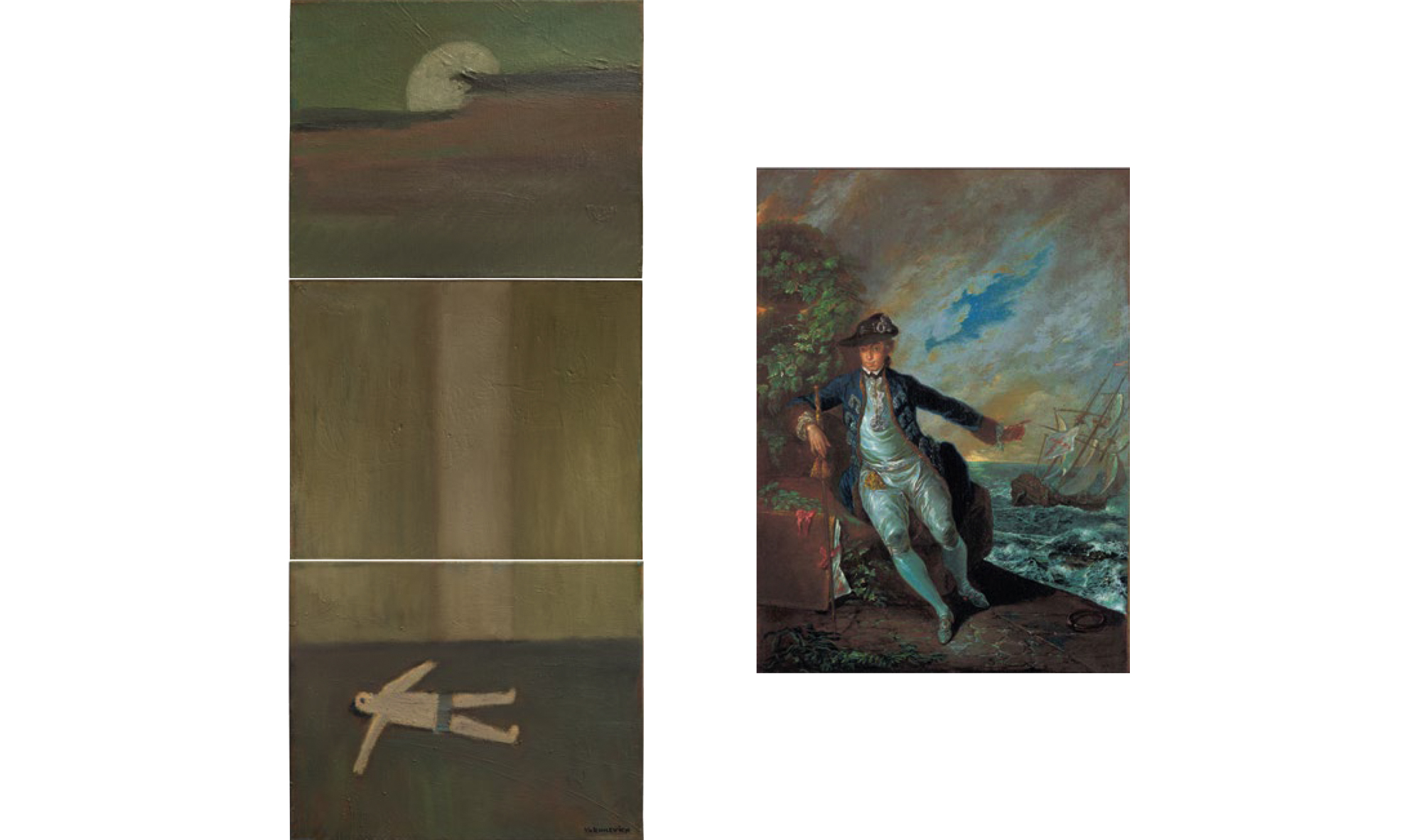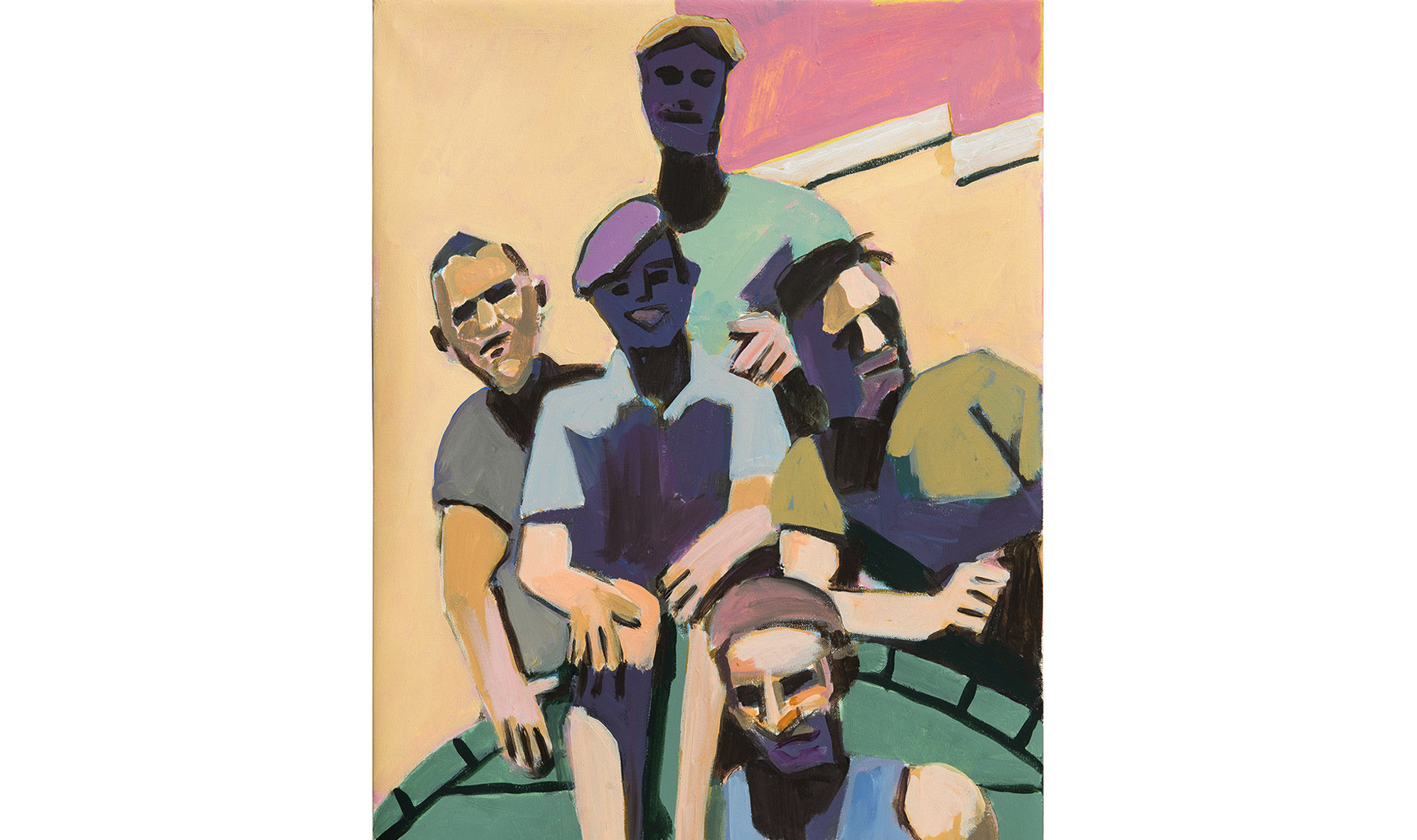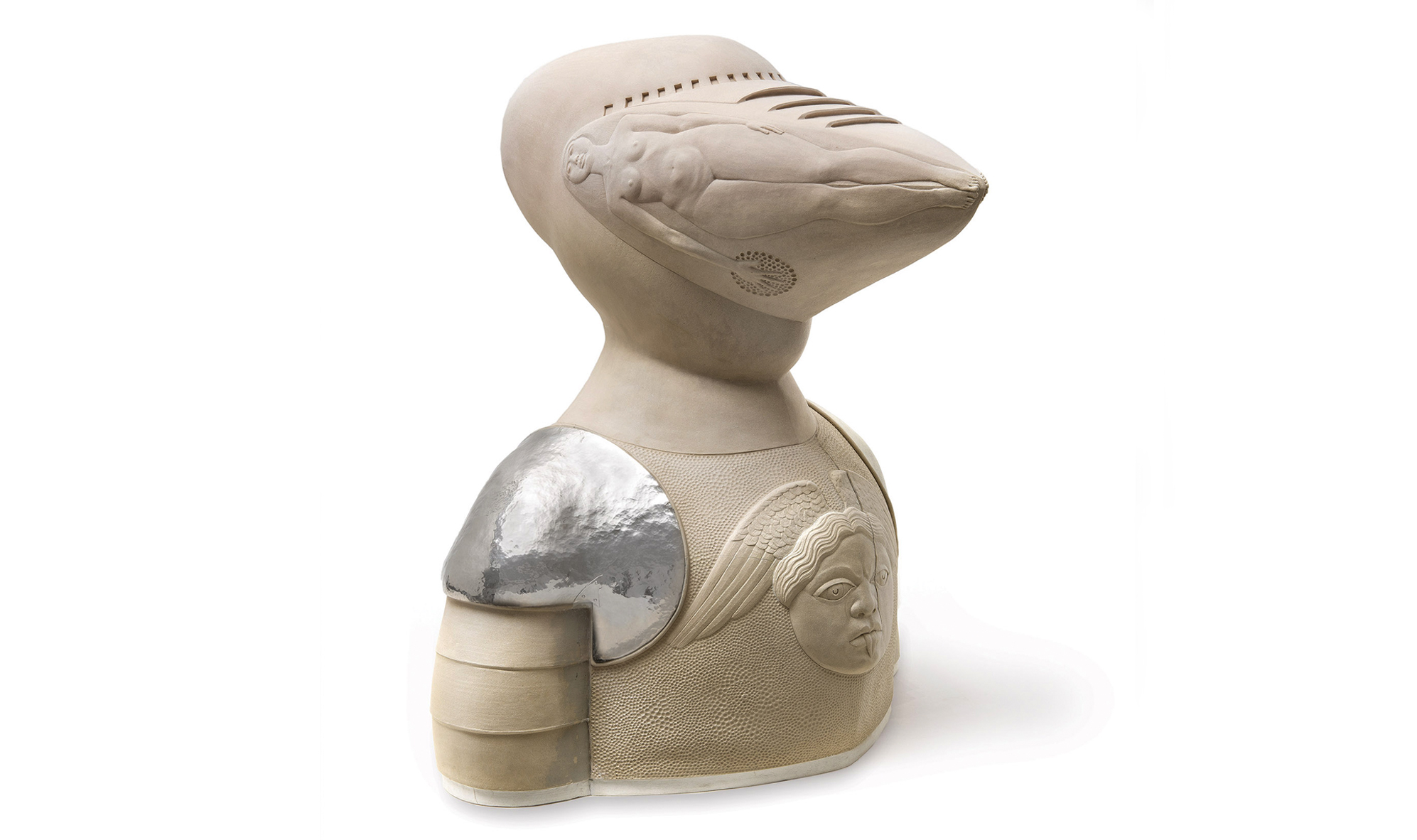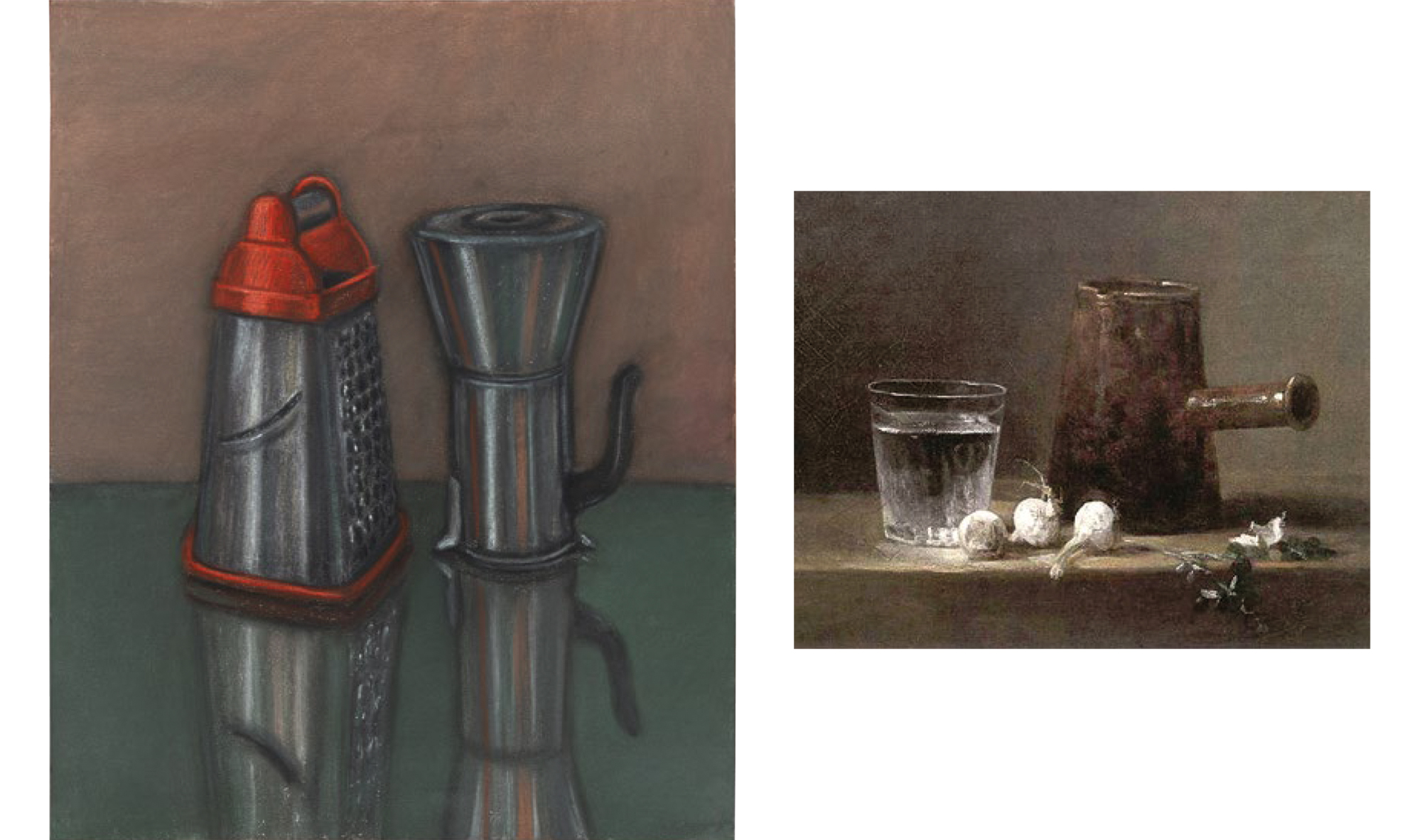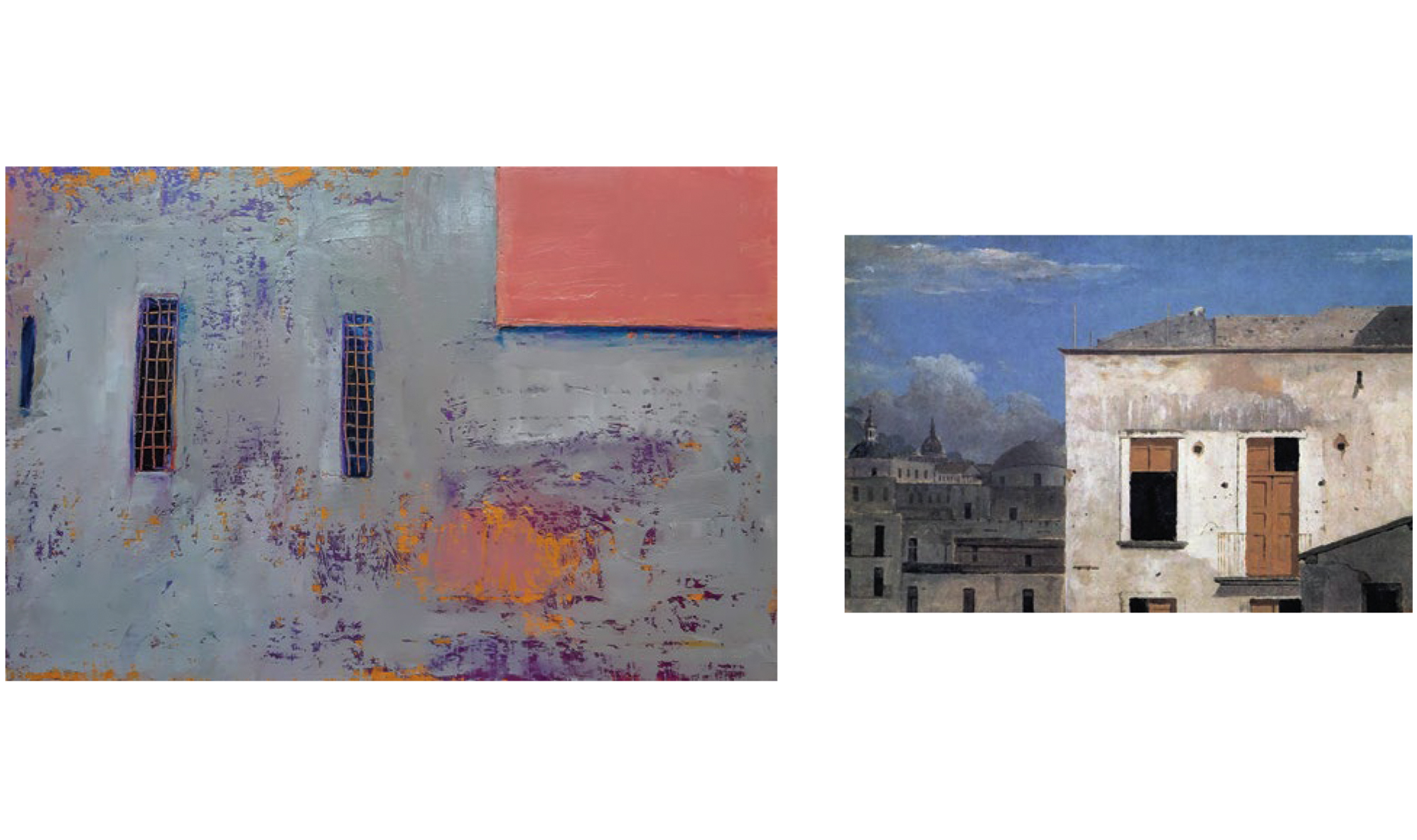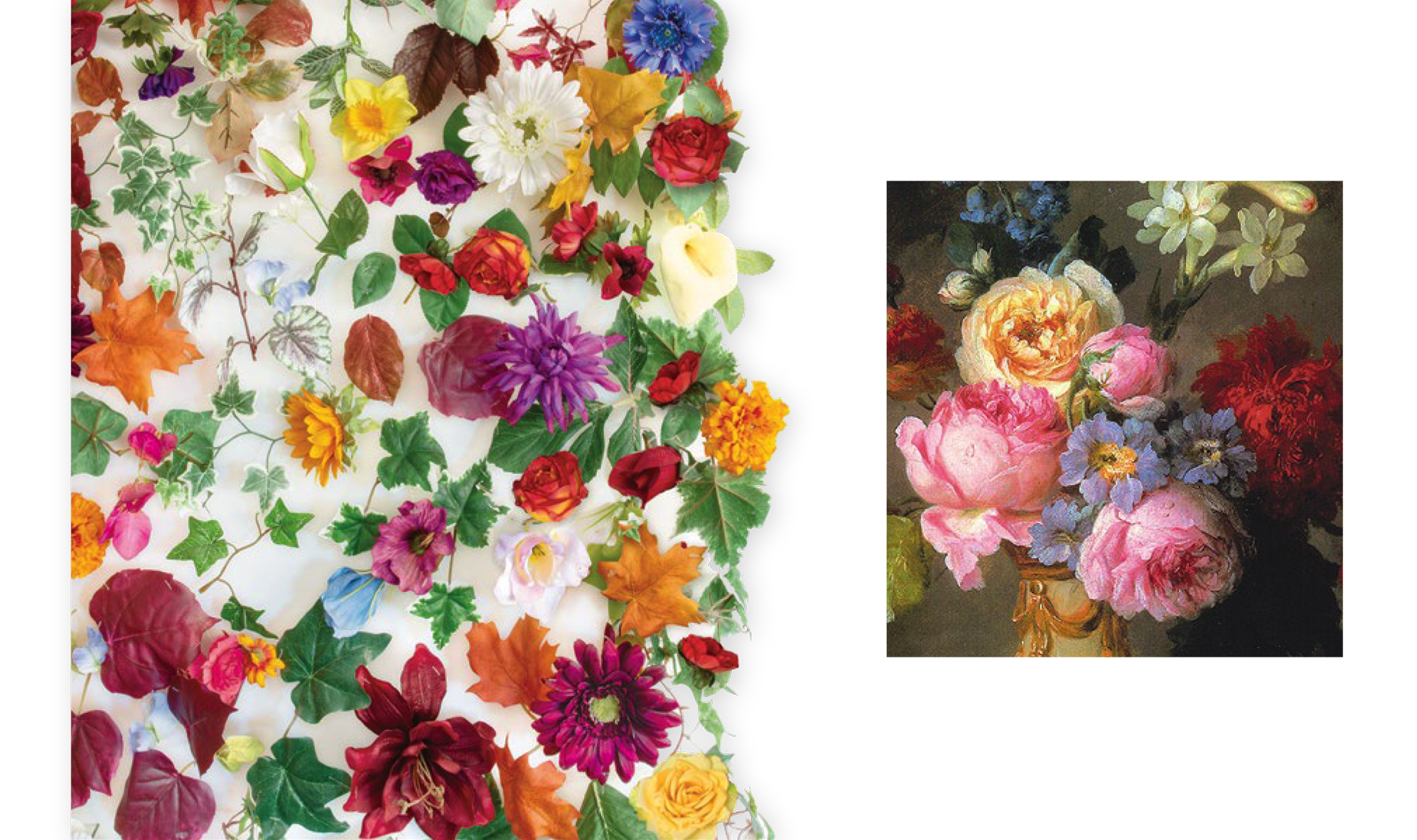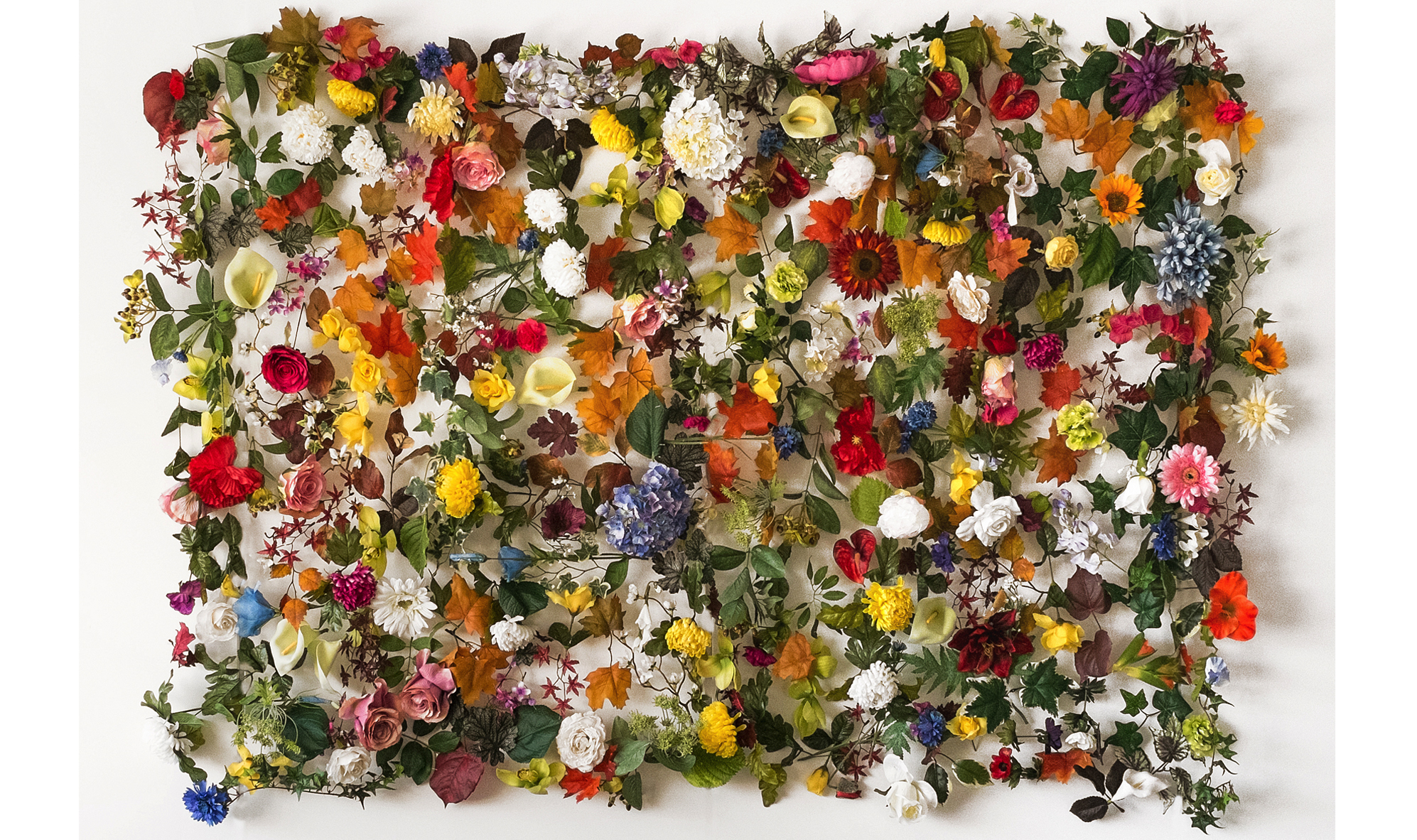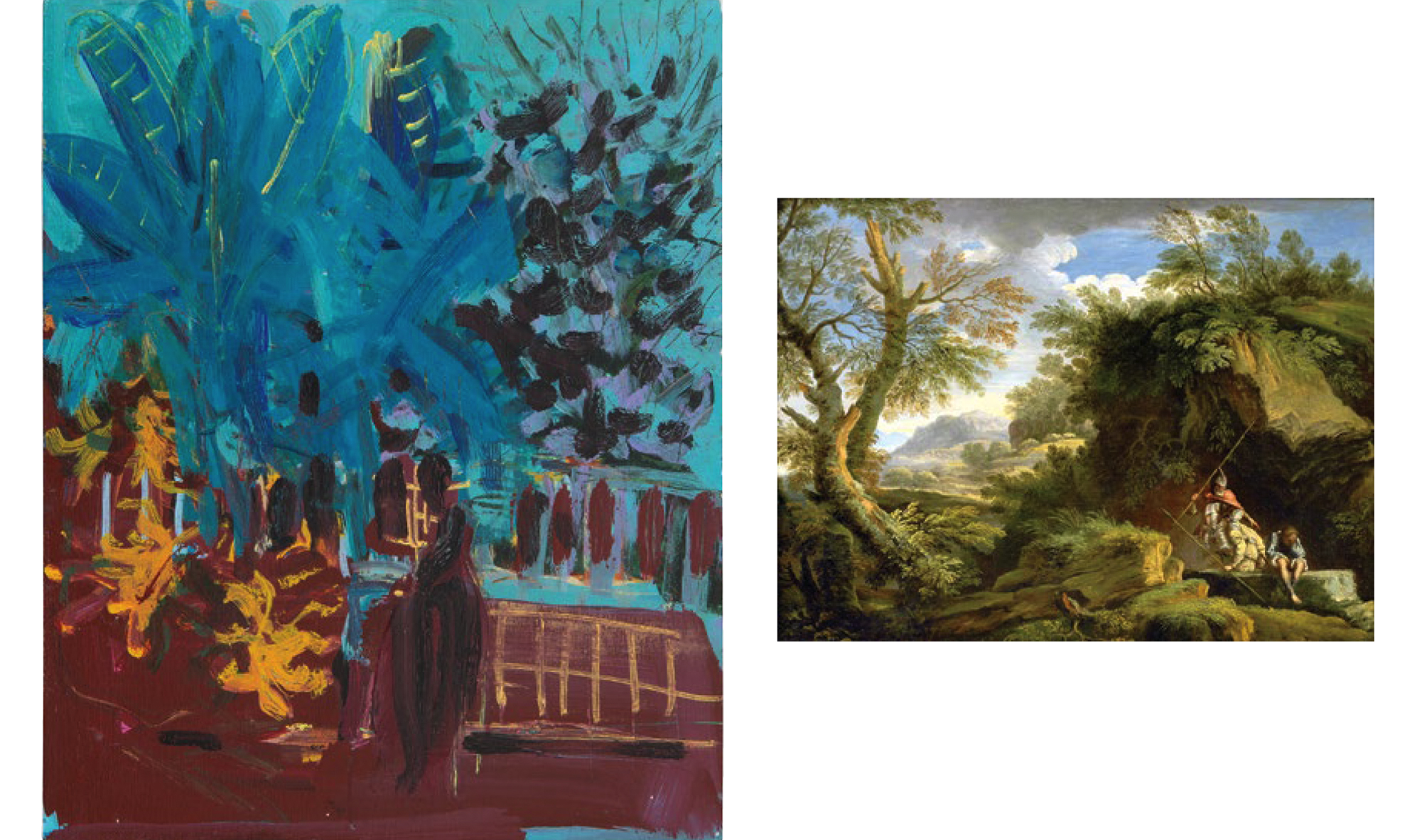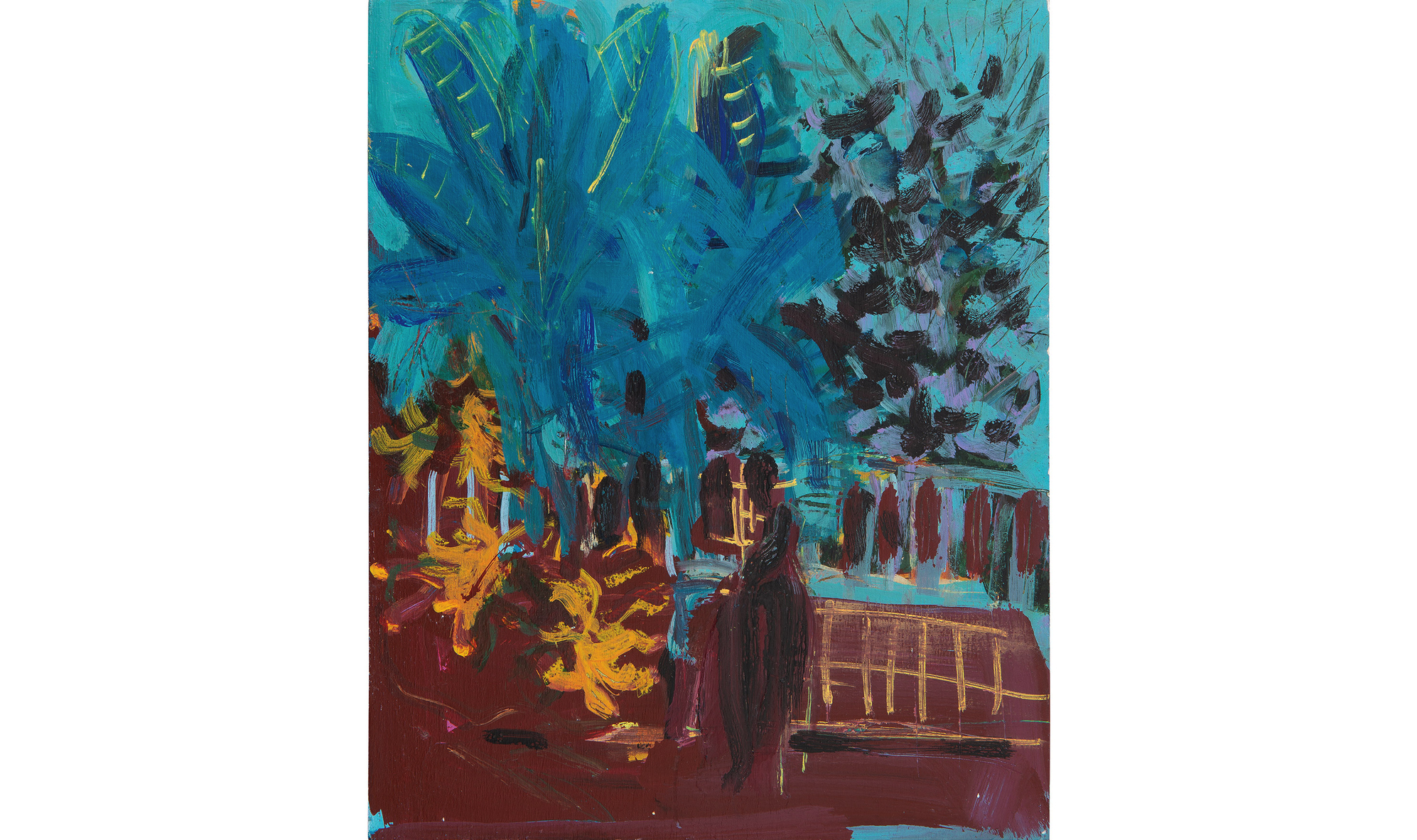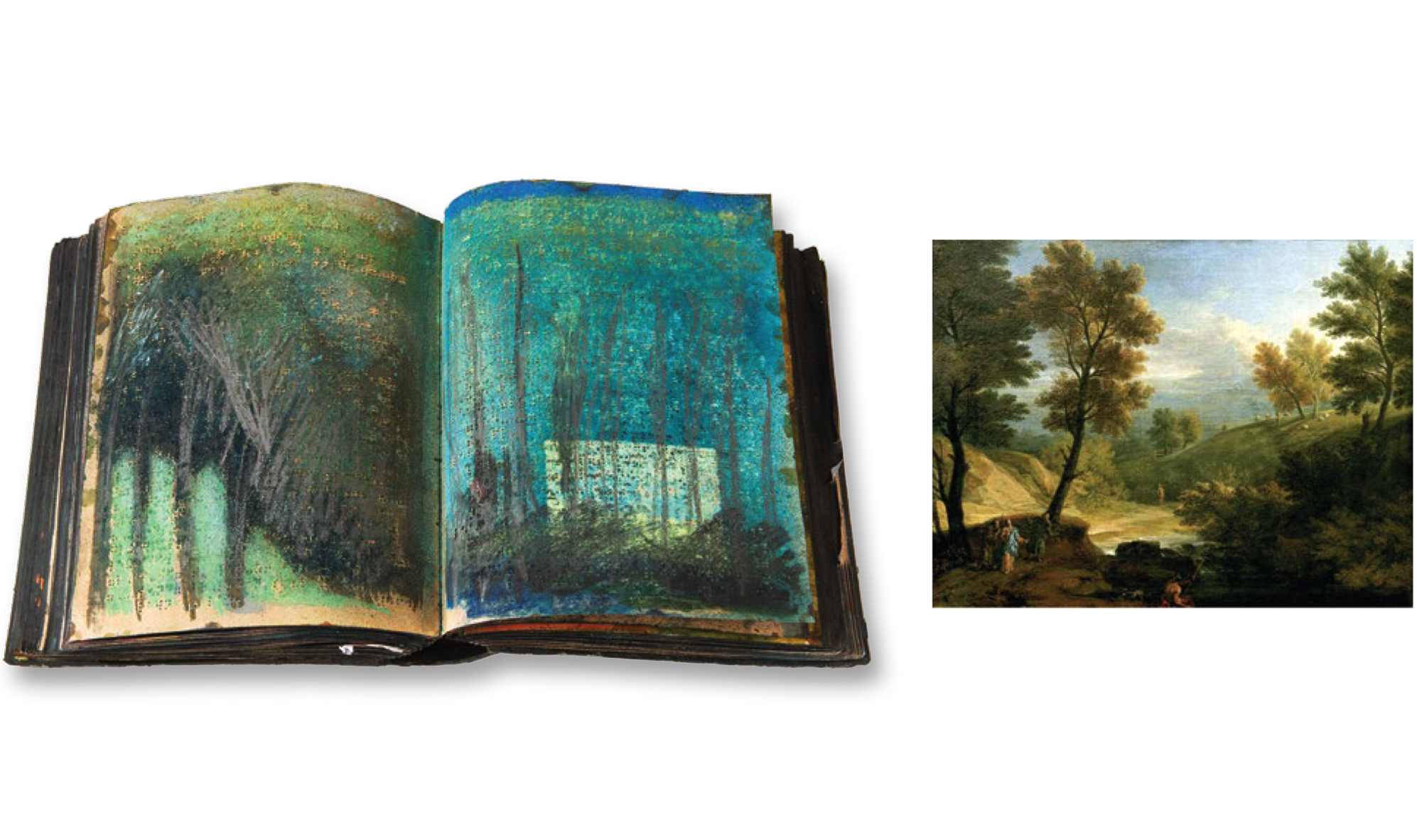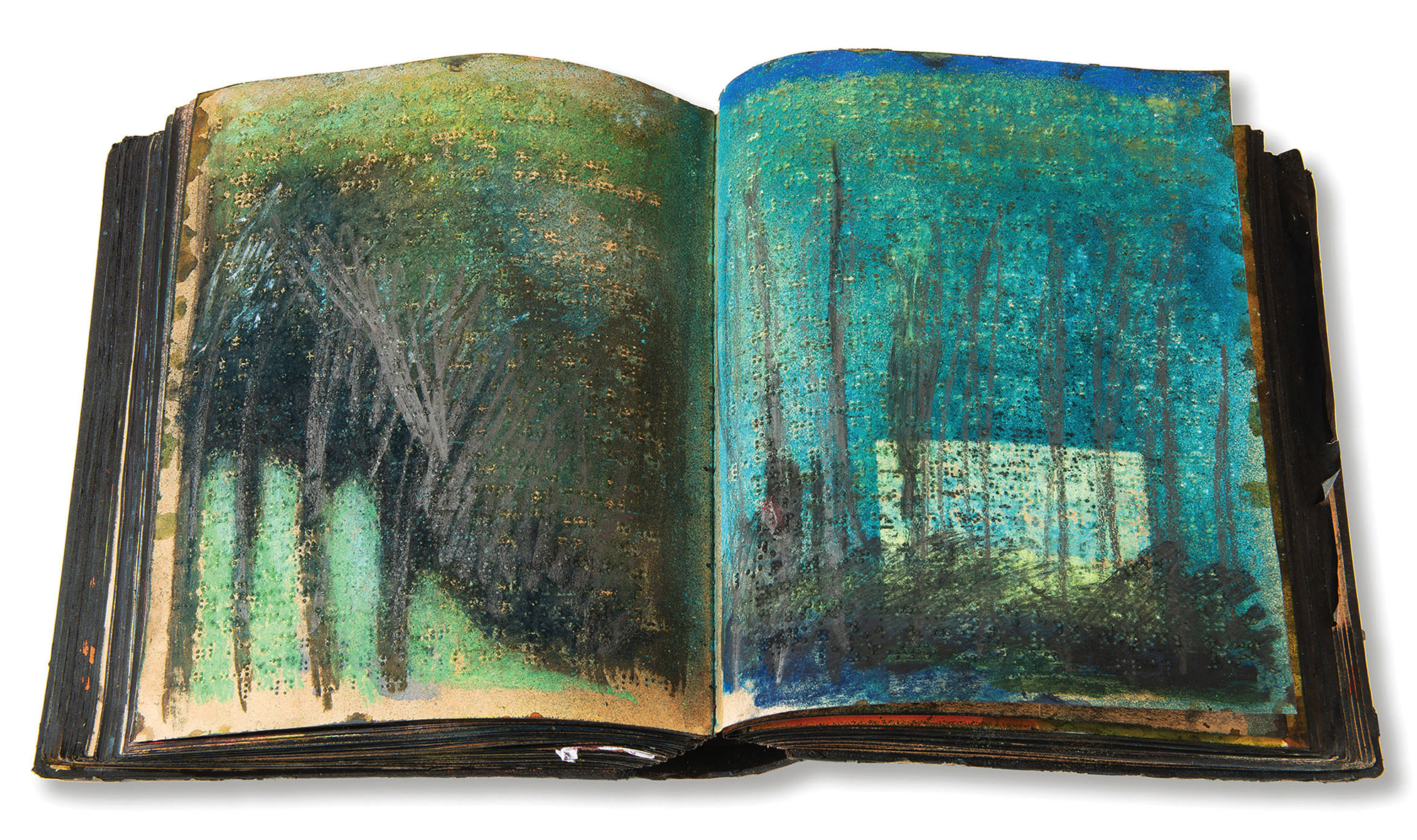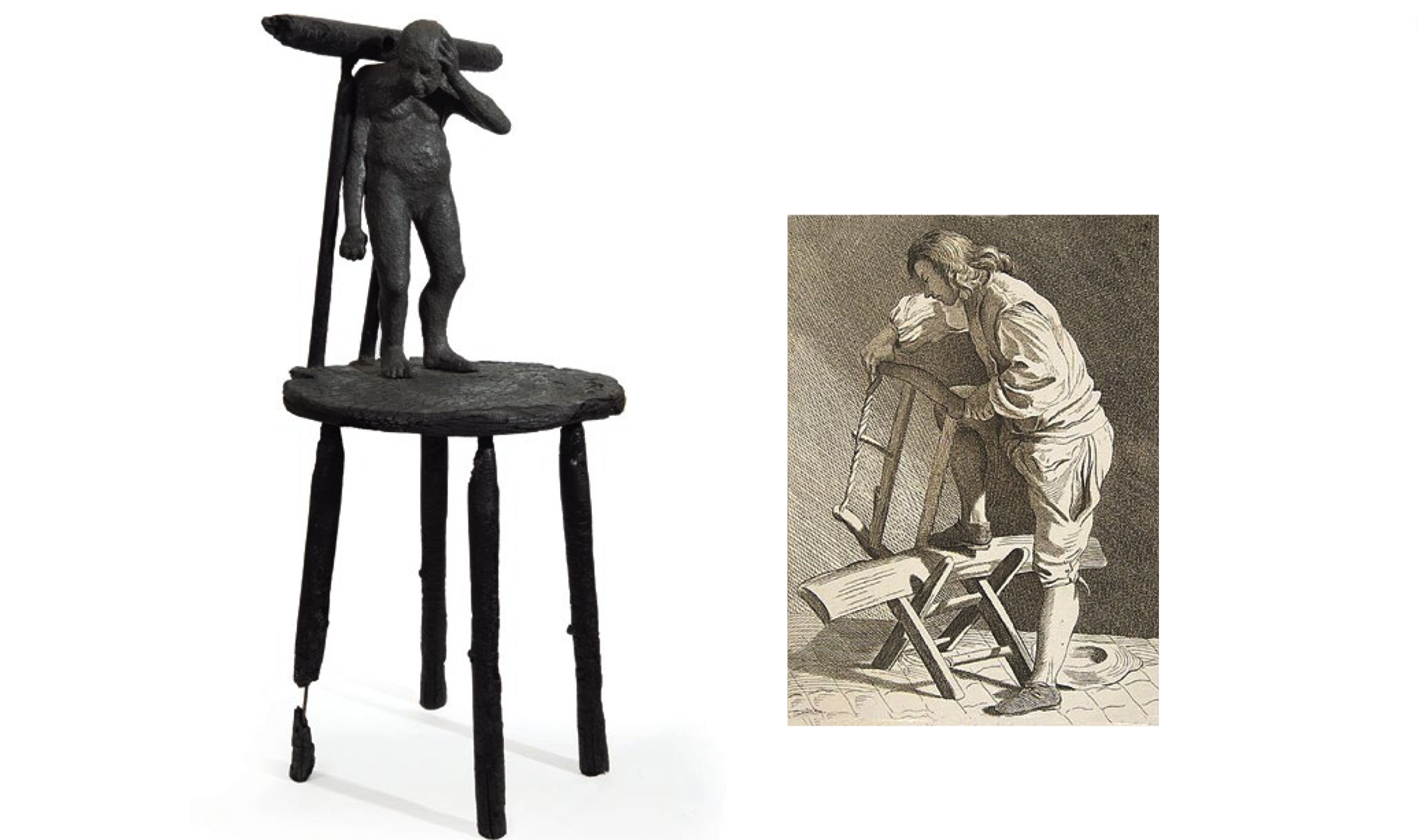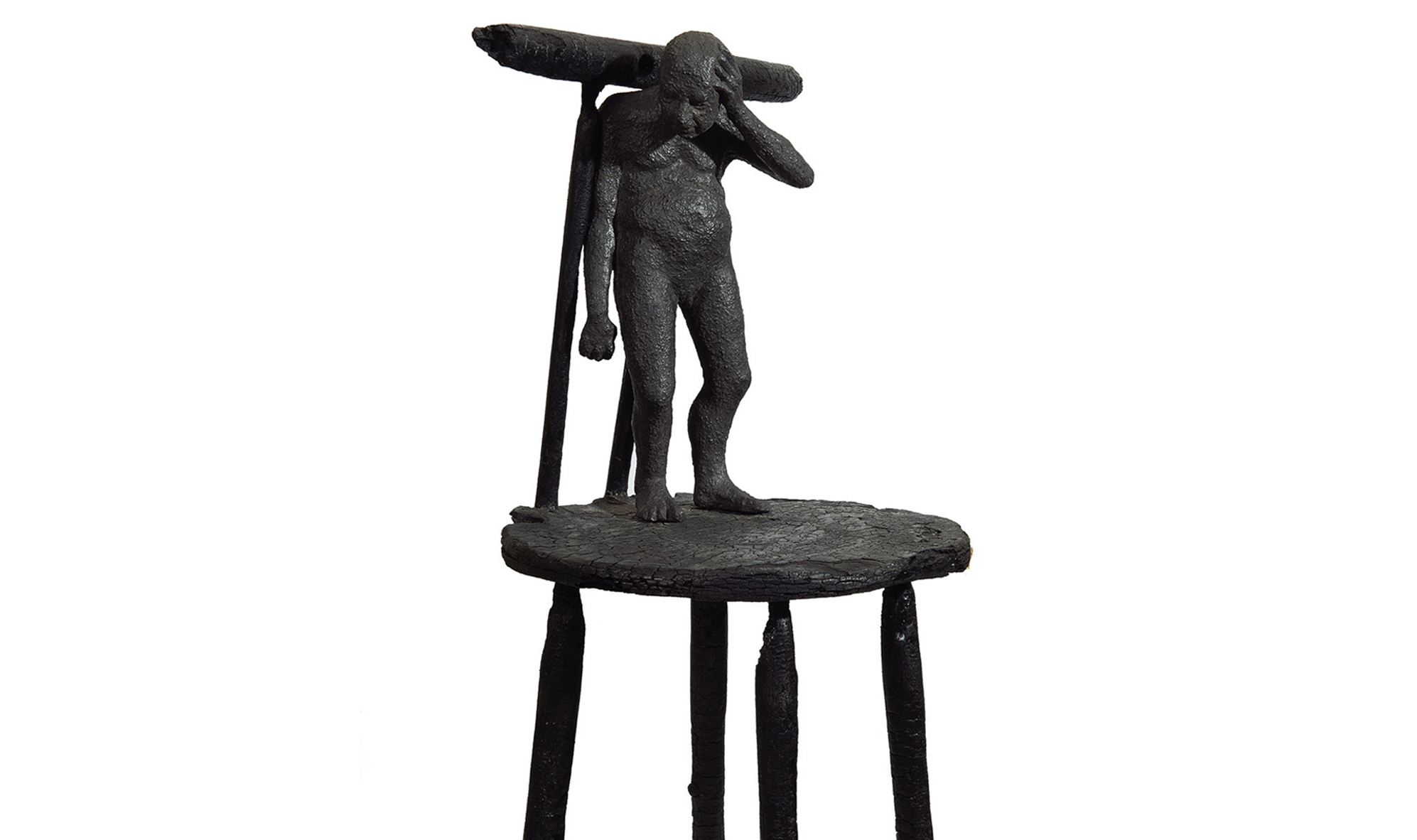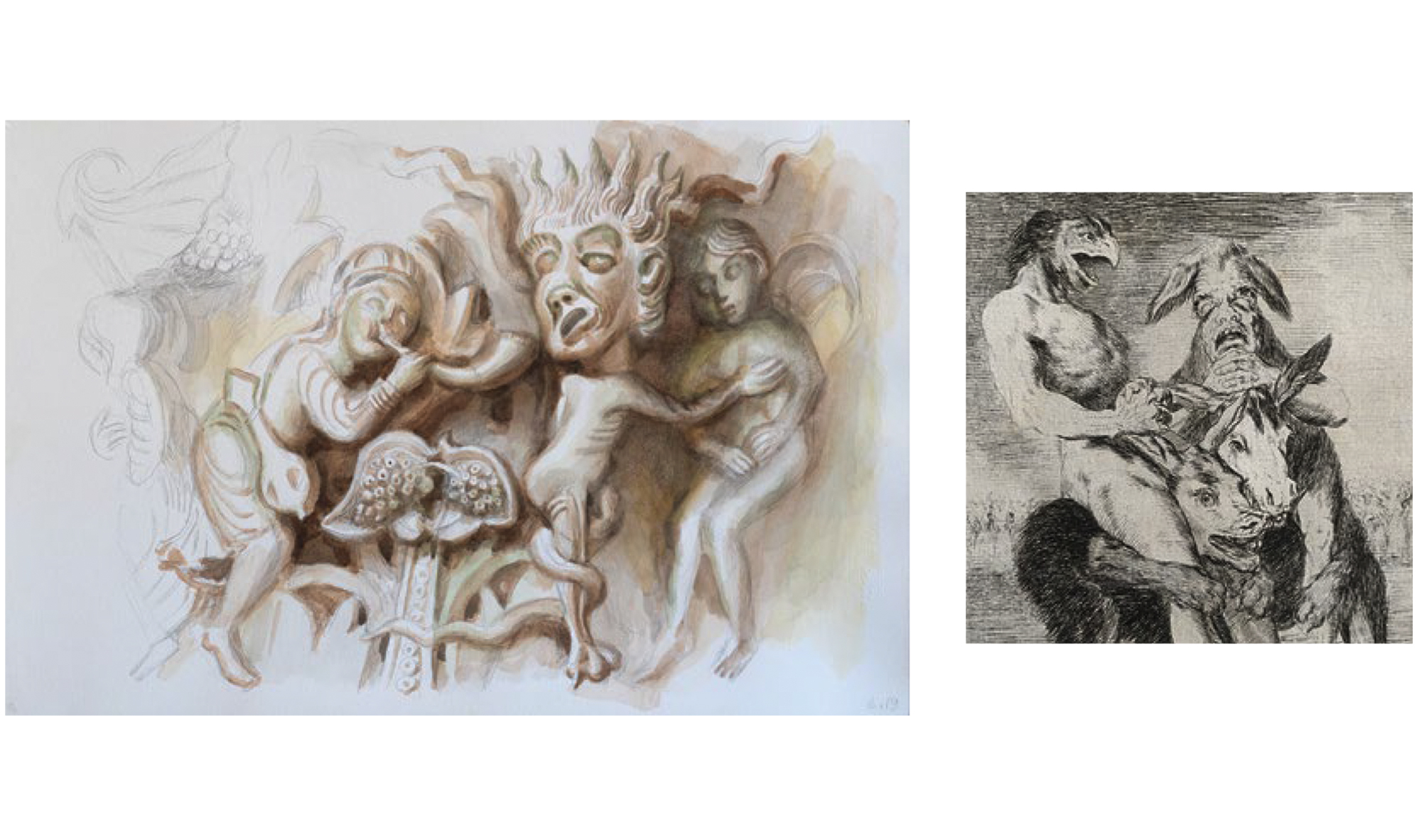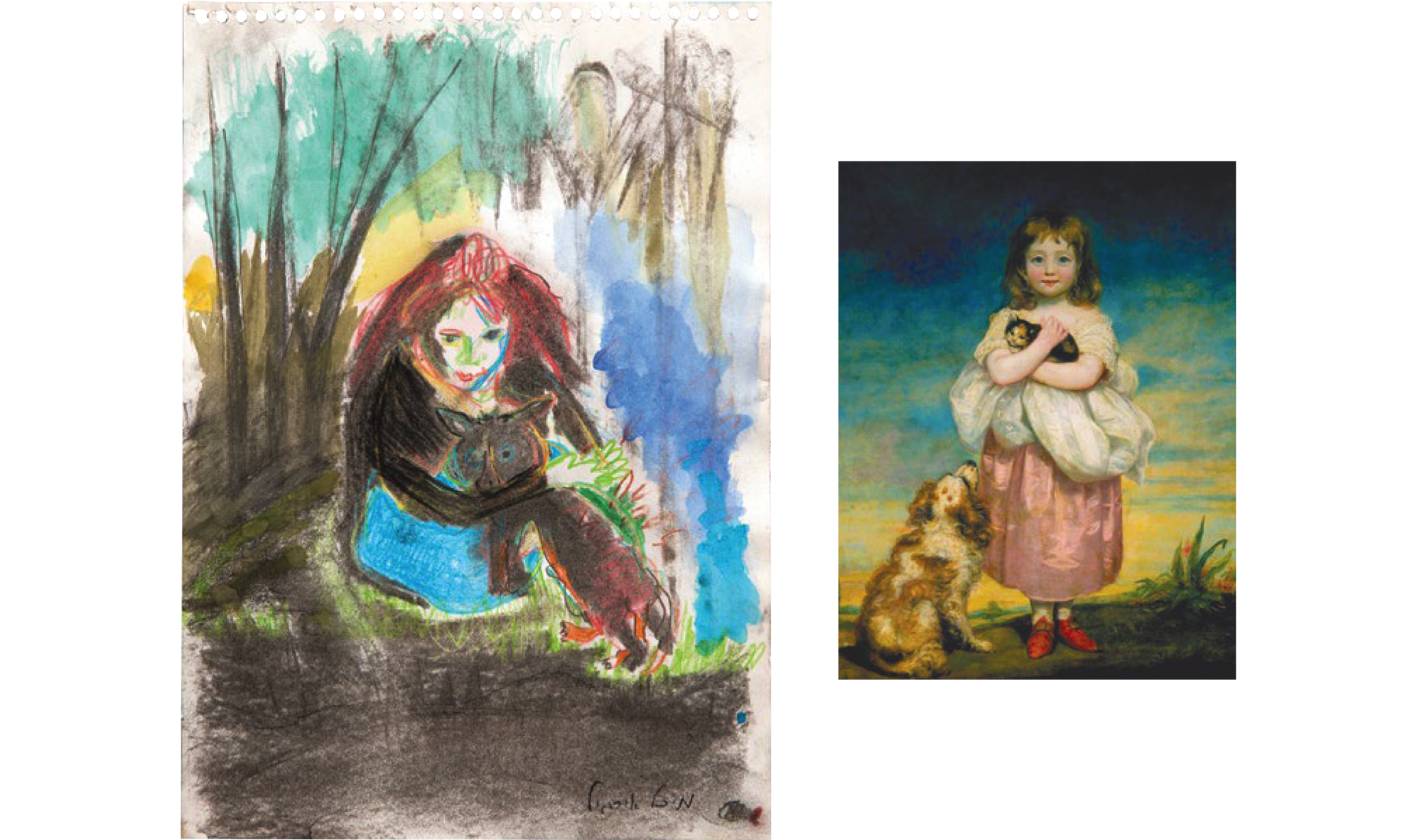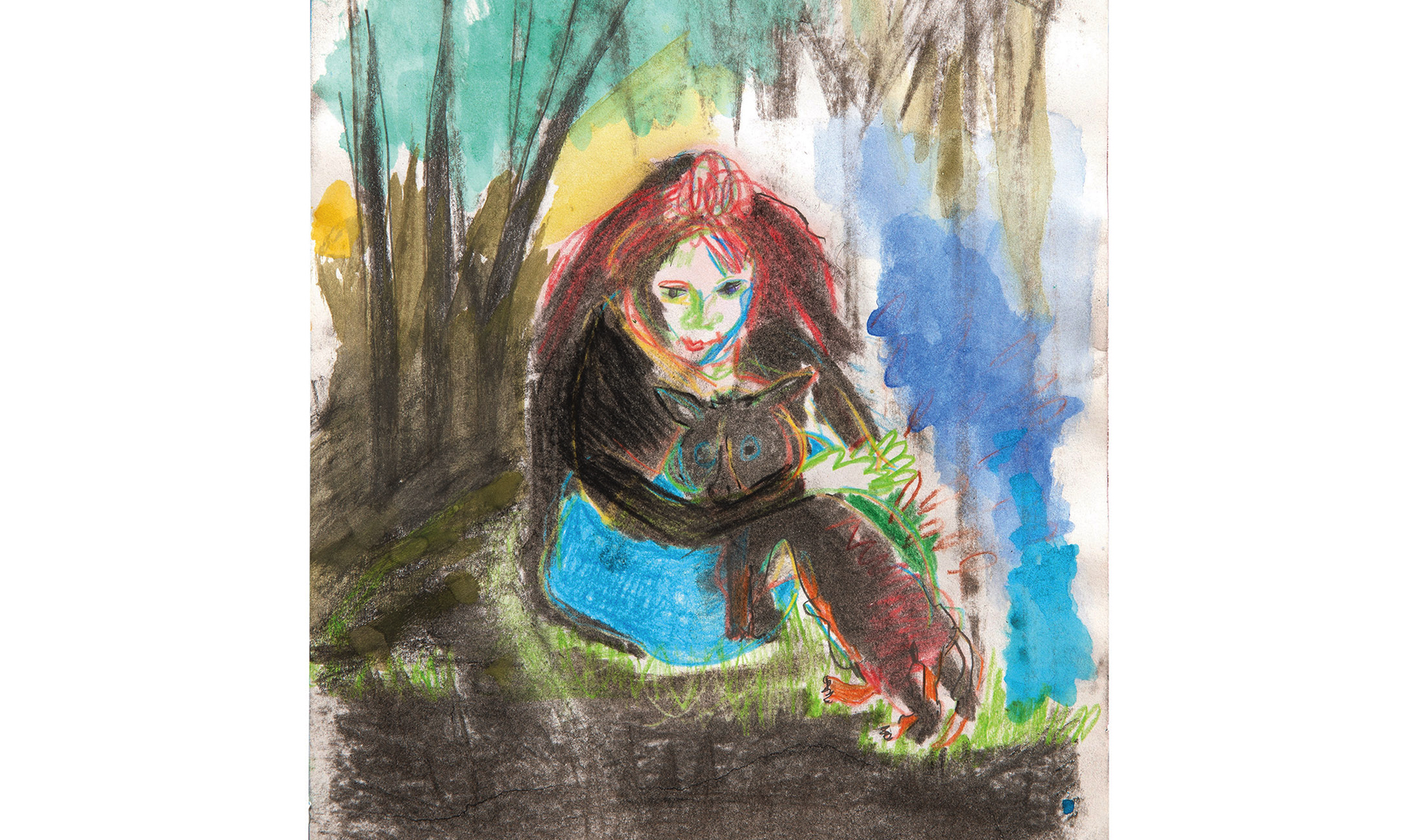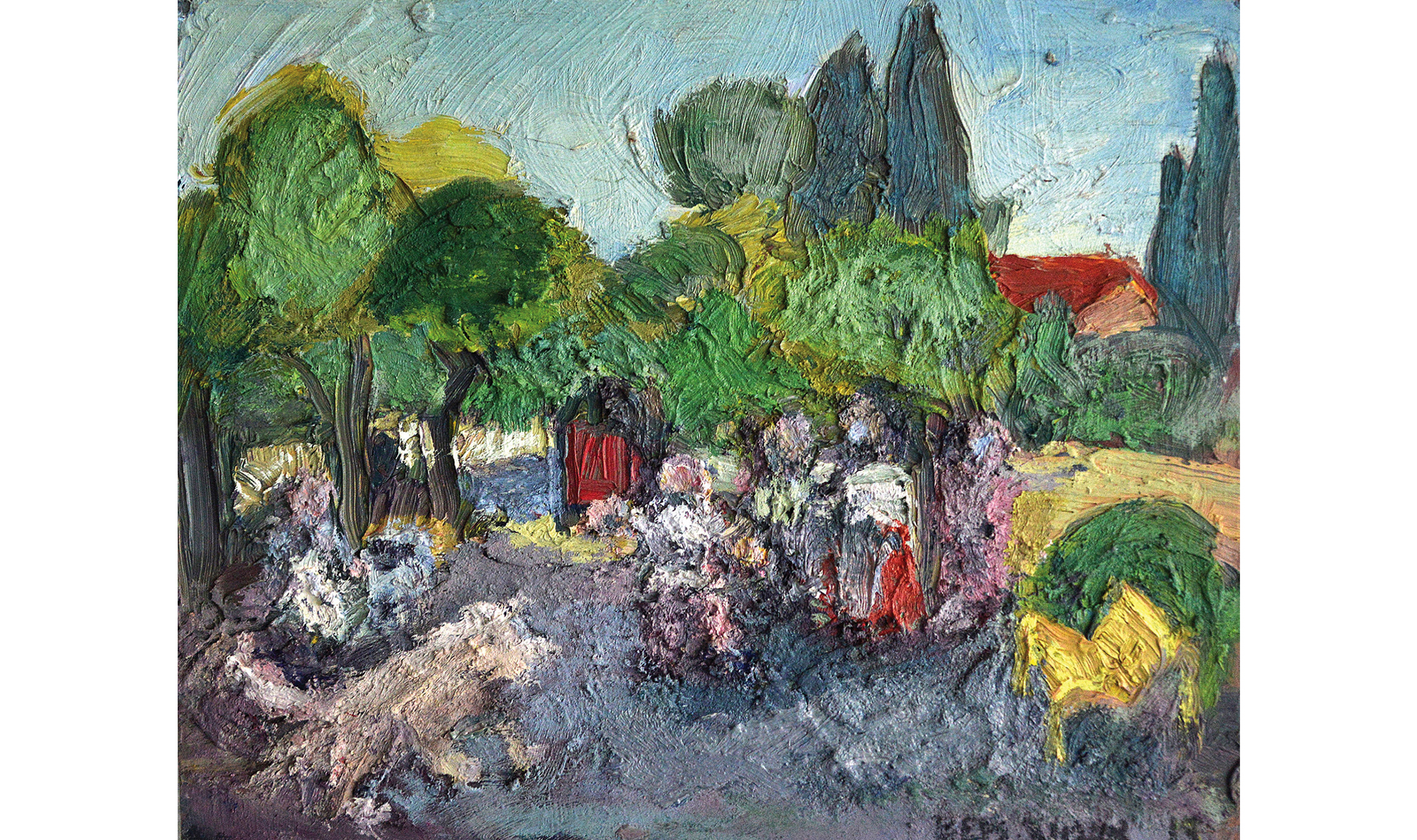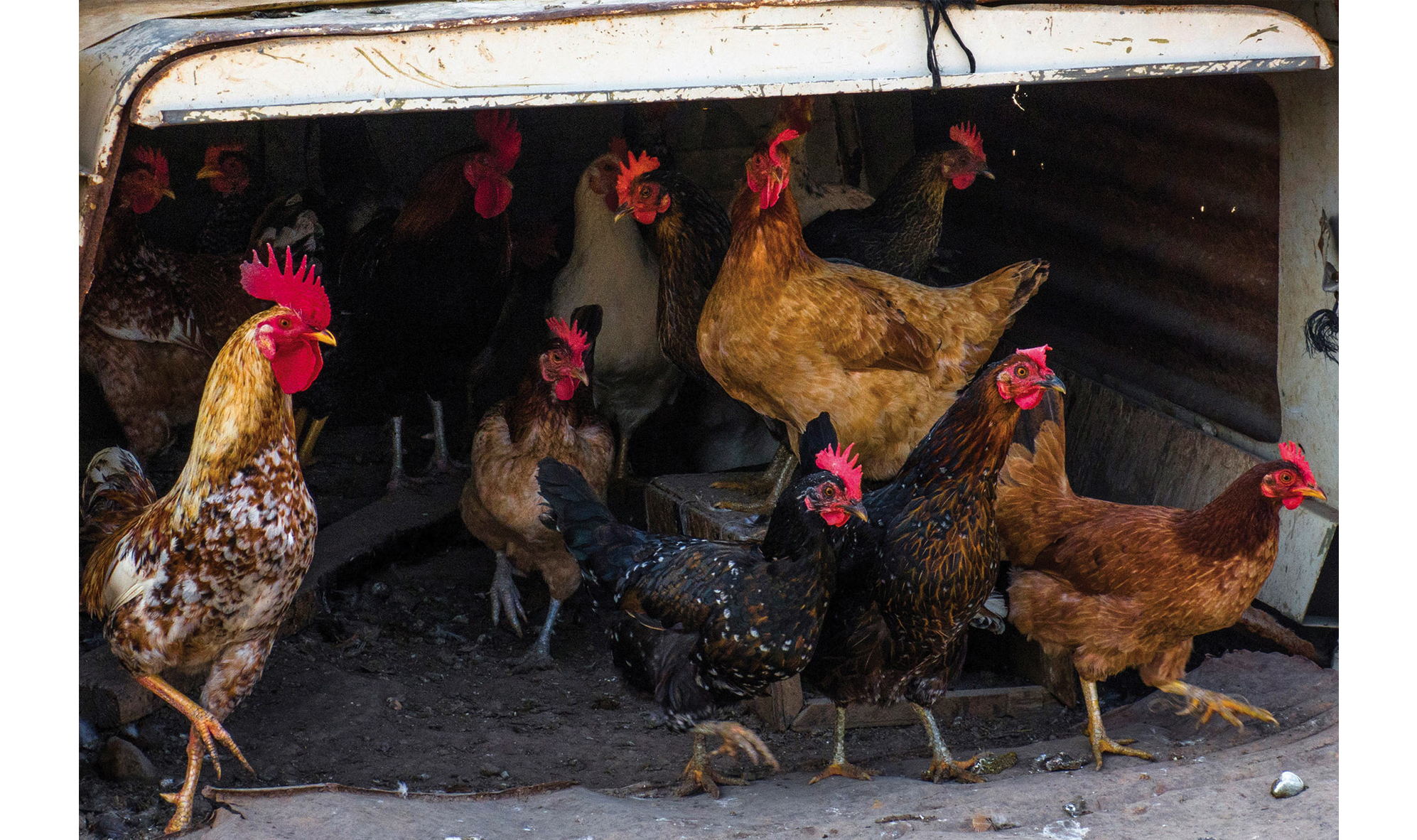
נאוֹפּוסטיזם? נֶאוֹסֶנְט? תערוכה קבוצתית
אוצרים: לנה זידל, סשה אוקון
פתיחה: 9.12.2021 | נעילה: 9.2.2022
משתתפים: דורון אדר | מיכל אורגיל | מקס אפשטיין | דינה בליך | יוסי וקסמן | לנה זידל | עודד זידל | לאוניד זייגר | אליזבטה זיידנר | ריטה מנדס-פלור | שרה נינה מרידור | גבי יאיר | מיכאל יחילביץ׳ | בוריס כץ | בן סימון |
רונן סימן טוב | רינה פלד | יובל קדר | נטשה קוזנצובה | בתיה רוזנק | רות שרייבר
טקסט באנגלית אחרי העברית
*הצילום למעלה וכן על כריכת קטלוג התערוכה: רות שרייבר, גן עדן, 2021 (פרט)
תופעת נֶאוֹסֶנְט
לפני כעשור, הבחנתי במגמה ההולכת ומסתמנת בזירת האמנות העכשווית: העבודות נטוּ יותר ויותר לנרטיביות, עמלנות, פיגורטיביות, ושמו דגש על רגשות אנושיים. במהלך השנים האחרונות, כתוצאה משיטוט בתערוכות רבות, שמתי לב שאופן הטיפול באובייקטים ויזואליים השתנה – גם טכנית וגם תמאטית. אופן הטיפול או ״הגישה״ הפכו למרוככים יותר, תקשורתיים יותר, מזמינים יותר לדו-שיח. קראתי לתופעה זו נאו-סנטימנטליזם, או בקיצור ״נאוסנט״. נראה לי גם נכון שנטיות כגון אלה יכולות להיתפס כעוד גרסה מהפנים הרבות של הפוסטמודרניזם, אך מנקודת מבטי, הנאו-סנטימנטליזם הוא יותר הומני, פחות מנוכר ופונה אל הצופה בגובה העיניים.¹
תוך כדי התבוננות במגמה זו, הנבחנת בתערוכה הנוכחית, גיליתי הדהוד או סוג של קרבה בין מאפייני הסנטימנטליזם הקלאסי לבין זה החדש. הסנטימנטליזם הקלאסי נולד והתפתח באירופה בין שנות ה-20 לשנות ה-80 של המאה השמונה עשרה, כתגובת נגד לתופעה של ייצור המוני ומכניזציה. תהליך היווצרותו היה הדרגתי והרמוני ולא היה מלווה בהתנגדות מיליטנטית לקידמה.
נציגי התרבות של התקופה: אמנים, מוזיקאים, סופרים ופילוסופים לא הפגינו את התנגדותם לתיעוש, אלא להפך, שאפו לאזן את התהליך על ידי הדגשת ״המרכיב האנושי״ בעבודתם. בין הנושאים שלהם היו עלילות מיסטיות, אלגוריות, טבע, סצנות מחיי היום-יום, ילדוּת, אהבה ומוות. יצירותיהם היו פיוטיות, רוויות רגש ולעתים אף גלשו לפאתוס.²
הסנטימנטליזם החדש, בדומה לזה הקלאסי, שם דגש על המרכיב האנושי והרגשי. ההבדל טמון בהגשה ובגישה. הסנטימנטליזם החדש מפעיל את הרגש כאמצעי להעברת מסרים, כחומר גלם אמנותי, ולא כ״מטרה״ או מסר מרכזי. התחושות והרגשות מוצגות לרוב עם שמץ של ריחוק אירוני. אמני הסנטימנטליזם החדש מרבים לשלב בעבודתם אירוניה, קיטש, קרנבליות, לפנות להומאז׳ ולציטוטים ובאמצעותם להרחיב ולהעשיר את הדיאלוג עם אמני העבר. לצורך המחשת הדיאלוג הנ״ל, העבודות בתערוכה מלוות ברפרודוקציות מתקופת הסנטימנטליזם הקלאסי.
הסנטימנטליזם החדש, כמו זה הקלאסי, צמח והתפתח בצורה טבעית-הרמונית, ללא ביטויים מיליטנטיים, על רקע השטחה דיגיטלית וניכור, ללא התנגדות לקידמה טכנולוגית, אלא הדגיש בעצם קיומו את חשיבותה של תפיסת העולם הסובייקטיבית וכל הקשור בה. בתקופתנו המעורערת, בעידן נגיף הקורונה, הסגרים והבידוד, דווקא הסובייקטיביות העמוקה והמסר האישי במובהק – הם אלה הניצבים במישור הקדמי, הופכים לבעלי ערך ולמקלט – הבלעדי כמעט – לא רק עבור האמנים, אלה דומה שגם עבור כל מה שמתקרא ״תרבות״ בכלל.³
התערוכה הנוכחית מהווה מעין ניסוי, הבוחן את נוכחות רוח הנאו-סנטימנטליזם בשדה האמנות הישראלית העכשווית. האם אכן קיימת מגמה כזו? האם ניתן לקרוא לה: ״נאו-סנטימנטליזם״? או שמא, הרבה יותר מתאים לקרוא לתופעה המסתמנת בשם האירוני: ״נאוֹפּוֹסְטיזם״, כפי שטוען האמן ושותפי לאוצרוּת בתערוכה זו, סשה אוקון, במאמרו ״מסר ברוח הזמן״?
לנה זידל
אמנית ואוצרת
1. פוסטמודרניזם הידרדר באופן בלתי הפיך לכיוון התופעה הקרויה בשם המדבר בעד עצמו: ״פוסט-הומניזם״ (Post-Human). נאו-סנטימנטליזם מציב אלטרנטיבה לתופעה אנטי-הומנית זו ופונה ל״אנושי״. (קראו את מישל וולבק, ״אפשרות של אי״).
2. אמני הסנטימנטל יזם הקלאסי: ז'אן-בטיסט שרדן (Jean-Baptiste Chardin), אן ולייר קוסטר (Anne Vallayer-Coster), ז׳אן-אטיין ליוטאר (Jean-Etienne Liotard) תומאס גיינסבורו (Thomas Gainsborough), אליזבט ויז'ה-לה ברן (Elisabeth-Louise Vigee-Le Brun), ריצ׳רד ברומפטון (Richard Brompton), ז׳אן-בבטיסט גרז (Jean-Baptiste Greuze), תומאס ג'ונס (Thomas Jones) ורבים אחרים.
3. אמני הנאו-סנטימנטל יזם בזירה העולמית: דמיאן הירסט ( Damien Hirst), ג׳ף קונס (Jeff Koons), יאיוי קוסמה (Yayoi Kusama), קיקי סמית ) ,)Kiki Smith אינקה שוניברי (Yinka Shonibare), יואה מינג׳ון (Yue Minjun), ליליאנה פורטר (Liliana Porter), ג׳סיקה ג'קסון האצ'ינס ) ,)Jessica Jackson Hutchins בט׳ קטלמן (Beth Katleman) ורד אהרונוביץ (Vered Aharonovich), שי אזולאי (Shay Azulay) ורבים אחרים.
מסע ברוח הזמן
הנתיב המאוחד של הנאו-טְרדיציונליזם, המלווה בעושרן של מודיפיקציות אינדיווידואליות, מתקיים במהותו כרֶה-אונטולוגיזציה של אמנות, דרך לקיחת אחריות בפני תנועת הנעה-עצמית של החיים בדמותה של מסורת תרבותית המתקיימת בתוך סטרוקטורות מֶטא-טקסטואליות, המתבטא ביחס דכאוני ספציפי כלפי זרימת הזמן, המלווה בתחושת סכנה עוינת לגבי מהותו החמקנית והבלתי נתפסת, כי הרי הקומפְּרֶסיה הלשונית יכולה להשיג את מטרתה אך ורק על חשבון משאבי הסינקרֶטיזם המורפולוגי…
אוף… ועכשיו, אחרי שהשתכנעתם שיש ביכולתנו להמחיש בקלות טקסט אוצרוּתי למופת, בואו, למען הגיוון, נדבר כמו בני אדם – בכנות ובשקיפות. כי, כמו שנאמר: ¹Facile vero iucunda loqui. העניין הוא בכך שאנו האמנים נמצאים במצב איום, אם לא לומר – טראגי: במשך אלפי שנים היינו חלק אינטגרלי וחיוני של החברה… וחדלנו להיות כאלה.
למען האמת, אף אחד לא שם עלינו, ואיש לא זקוק לנו. לא מאמינים? אז בואו נניח שאמנים יפתחו בשביתה (לא חשוב מאיזו סיבה; נניח, כמו בכל מדינה מתוקנת, הם ידרשו שאחוז מסוים מתוך סך כל המבנים הציבוריים יכלול אלמנטים אמנותיים, כגון: פסיפסים, פרסקאות, ויטראז׳ים וכו׳).
רק לצורך השוואה: דרישותיהם של אינסטלטורים במצב זהה, יסופקו קרוב לוודאי תוך חמישה ימים; דרישותיהם של פועלי נמל – תוך שבוע; דרישות הרופאים ועובדי המגזר הציבורי – עוד כעבור זמן מה; אבל איש לא יסב את תשומת לבו לכיוון האמנים. ובצדק. החברה לא זקוקה להם.
הרי, לפי הערתה המדויקת של סוזן סונטאג: ״זמנים של הארות קולקטיביות חלפו בשלום ונותרו בעבר: נכון להיום, כל המוחות הגדולים, וכמו כן גם הסתומים הגמורים, הטיפשים והנבונים – כך או אחרת, כבר התבטאו ואמרו את דברם״.² אמת ויציב. גלי הצונאמי, שעלו בעקבות המהפכה באמנות בתחילת המאה הקודמת, נסוגו לאחור והותירו אחריהם את הבוץ הפוסטמודרני עם תולעי גוויות ותנים זוללי פגרים. כן, כל אותם המכנים את עצמם: post ,neo או new.
אז מה, אם כן, למסכנים שכמונו, נותר לעשות? הרי בינתיים, ובהתאם למהותה, החברה הצרכנית דורשת מאתנו משהו חדשני על בסיס קבוע, אבל מהיכן נשיג דבר שכזה? הרי כבר פתחנו את בטנו של הכריש וכבר הראינו את המפשעה של צ׳יצ׳ולינה… ועכשיו אנחנו, כמו נערות העובדות על הכביש, מוכנים לעשות כל דבר העולה על הדעת, כדי לזכות במעט תשומת לב. (אגב, מעניין מדוע חל איסור מוחלט על מכירתו של גוף האדם – ולעומת זאת, את הנפש מותר למכור ללא הגבלה והיסוס?… סתם, הערת שוליים, מעין אתנחתא לירית). אבל אל נא תביישו אותנו בגלל האופי הזנותי שלנו. בסך הכול, אנחנו רוצים להיות. פשוט, להיות נחוצים.
אבל איך נוכל להשיג זאת? איך? למען האמת, המרשם הוא די פשוט: בעניינים שלנו, לפרוץ בלהק, סליחה – בקבוצה, תמיד היה קל יותר, מאשר להסתנן לבד. והקבוצה חייבת להצטייד במניפסט. מניפסט שמודיע ³Urbi et Orbi על הופעת הזרם החדש, שעד כה לא נשמע כמוהו (או כמעט לא נשמע כמוהו).
עכשיו מבטנו מופנה לכיוון הנאו-טרדיציונליזם, ממנו התחלנו את הטקסט המלומד שלנו. מה יקרה אם נפנה אל רגשות אנושיים? מה אם נקרא לתוצרת שלנו בשם נאו-סנטימנטליזם?
נדמה שהזרם הזה כבר הסתמן בספרות, אך באמנות – לא לגמרי. זוהי הזדמנות להתפרס על חלקת זהב. במבט חטוף – אלה הם פני הדברים, אך הרהרנו בדבר והגענו למסקנה, ש ״neo״ זה קצת נדוש, ״post״ קצת נמאס; ולגבי ה״new״, רק בינינו, הרי הוא למעשה: לחלוטין לא ״new״ ! אך לא ו לא, כלומר כן (או בכל זאת – לא?), הפתרון חייב להיות רדיקלי! נכון לכל עת. לכן, אנחנו מכרזים בחגיגיות על לידתו של הזרם החדש והאולטימטיבי: נאֶופּוֹסְטיזם.
נאופוסטיזם, שהוא בו-בזמן גם neo וגם post, מכיל בתוכו הכול: כל מה שהולך לקרות בעבר, וכל מה שכבר קרה בעתיד. הנאופוסטיזם – אוניברסלי כמו מעבּד מזון, שימושי ונוח כמו נעליים בלויות, הוא אלגנטי כמו רולס רויס (או סטיינווי – לבחירתכם).
הפילוסוף הספרדי חוסה אורטגה אי גאסט העיר בזמנו, שהוגה דעות הופך להוגה דעות רק במידה שהוא מתעמת עם העידן שהוא חי בו. זוהי מחשבה לא רעה, אבל היא תמיד זקוקה לעדכון בהתאם לרוח התקופה: אנחנו מתעמתים עם תקופתנו בדיוק באופן כזה שאנחנו לא מתעמתים איתה.
בברכה, סשה אוקון
אמן ואוצר
1. מה קל ונעים לומר את האמת: Facile vero iucunda loqui.
2. סוזן סונטאג, לחשוב בניגוד לעצמך: מחשבות על צ׳ורן
(Thinking Against Oneself: Reflections on Cioran).
3. לעיר רומא ולעולם – זהו ביטוי ששימש להכרזת הודעות חשובות ברומא העתיקה. בימינו, זאת ברכתו של האפיפיור לחג המולד ולפסח.
The Neosent Phenomenon
About ten years ago I became aware of a trend forming in the contemporary arts: works that were more altogether narrative, labored, figurative, and works that stressed human emotion. More recently, as a result of visiting a great number of exhibitions, I began to notice a shift in the manner that visual arts objects are treated-in both technique and theme.
The treatment or “presentation” has become softer, more communicative, more inviting to engagement and discourse. I have called this phenomenon NeoSentimentalism, “Neosent” for short. It seems to me correct that these inclinations can be considered another facet of postmodernism, except that Neosentimentalism comes from a perspective that is more human, less alienated and without pretention.¹
While reflecting on this trend for this contemporary exhibition I discovered a mirror of the properties of, or a kind of accord between, the classic Sentimentalism and the new Sentimentalism. Classic Sentimentalism was born and developed in Europe between 1720 and 1780 as a rebuke of mass production and mechanization. The process of its formation was gradual and smooth without a militancy instigated for its progress. The ambassadors of culture in the period: artists, musicians, writers, and philosophers did not protest in their contention to industry, rather the opposite, they remained firm and advanced processes to highlight the “human elements” in their works. Some of their themes were ²mystical narratives, allegories, nature, daily life scenes, childhood, love and death. Their creations were poetic, emotionally saturated even swimming in pathos.²
The New Sentimentalism, as did the classic, focuses its intention on the human and the emotional. The differences though are manifest in the presentation and the approach. These new sentimentalists fuel their messages with emotion, but emotion is used as a raw material and not as the central message or aim. The feelings and emotions are presented mostly with an ironic bent, as kitsch, carnival or in homage to quotations and through those widen and enrich the dialogue with artists from the past. To illustrate this dialogue just mentioned, the artworks for this exhibition are accompanied by reproductions of examples from the classic Sentimentalism.
The new Sentimentalism as did the classic, sprang up and developed in a manner
harmonious and natural, without rousing militant expressions, here on a flattened digital and alienated landscape, without opposition to technological progress, rather focused and concentrated on the subjective experience and all of its associations. In our unstable times, the Corona Pandemic era, while enduring the closures and the isolation, the profound subjective experience and the personal statement are the standard bearers at the front, becoming the value and a refuge, solely almost, not just for artists but similarly for all that is termed “culture”.³
This exhibition is a kind of experiment testing the relevance of the spirit of NeoSentimentalism in the contemporary Israeli art scene. Is there such a trend at all? Is it appropriate to call it NeoSentimentalism? Rather is it more appropriate to call this growing sentiment by a more ironic title: NeoPostism, as suggested by the artist and co-curator of this exhibition, Sasha Okun in his essay “Message in the Spirit of the Times”?
Lena Zaidel
Artist and Curator
1. Postmodernism is a phenomenon irreversibly deteriorated towards what the author calls Posthumanism. Neosentimentalism is the suggested alternative to the growing anti-humanist trend, and turns to the ‘human.’ (Read Michel Houellebecq “The Possibility of an Island”).
2. Classic Sentimentalist artists: Jean-Baptiste Chardin, Anne Vallayer-Coster, Jean-Etienne Liotard, Thomas Gainsborough, Elisabeth-Louise Vigee-Le Brun, Richard Brompton, Jean-Baptiste Greuze, Thomas Jones and many others.
3. Neo-Sentimentalist artists worldwide: Damien Hirst, Jeff Koons, Yayoi Kusama, Kiki Smith, Yinka Shonibare, Liliana Porter, Jessica Jackson, Beth Katleman, Vered Aharonovich, Shay Azulay and many others.
Message in the Spirit of the Times
modifications, touching the ontological essence of art, a way of taking responsibility in the wake of a self propelled existence manifested in traditional culture sustained in meta textual structures expressed specifically as depressive with relation to the expenditure of time, borne as hostile and dangerous with regard to the essence of the elusive and never grasped, since the compressed language can grasp the aim only in morphological syncretism…
Whew…Now that you are duly assured of our facility to demonstrate a text in curatorspeak, let us, for the sake of change, express ourselves clearly and as human beings. As is said,
facile vero iucunda loqui.¹ The issue is as such that artists are in a terrible condition if not to say a tragic condition. For thousands of years we artists were an integral and essential part of society and we have ceased to be that.
In truth, we are of no consequence and we are not needed. Need convincing? Let us suppose that artists were to go on strike (for whatever reason, and as might occur in any developed country where percentages of construction budgets for public buildings are allocated for artistic contribution such as mosaics, frescoes, stained glass displays etc.)
For the sake of comparison: demands from plumbers engaged in like public projects would be met within five days; demands of dockworkers – within a week; demands from medical doctors and public service workers – maybe a bit more time than others; but there is no one who would pay heed to a striking artist, and rightly so. Society does not need artists.
Consider Susan Sontag’s exemplary statements “Times of collective enlightenment have passed peacefully and remained in the past: as of today, all the great minds, as well as the dead endorsements, the foolish and wise – one way or another, have already spoken and spoken.”² True and firm words. The waves from the tsunami following the revolutionary art movements at the turn of the previous century have passed us by and left us the postmodern mud of worm eaten carcasses. Yes, all those who refer to themselves as: neo, post, or new. What then, if it is so, can pitiable artists do? After all the needs of society demand new products on a monthly basis, and from where will such material come? We have already sliced open the belly of the shark and have exposed Ciccolina’s crotch. We now find ourselves like street walkers trying any trick to gain attention (interesting to note why it is illegal to sell one’s body, but one’s soul may be sold without limit or hesitation – just a musing digression). Still, do not shame us for our fervent debasement because we ultimately wish to be, simply to be useful.
But how do we secure that? How? Truthfully, the formula is quite simple: in our eyes, forming a band, excuse me, a group was always easier than to set out alone. Any such group must retain a manifest. This manifest proclaims Urbi et Orbi³ the emergence of this new stream as unlike any before it (or almost as unlike any other before it).
So said, we now turn to Neo-Traditonalism, the scholarship of which we used to form this text. What will happen if we appeal to the emotions or feelings? What if we name our new venture Neo-Sentimentalism? It does seem that there is a memory of this tradition in literature, even in the plastic arts, although not fully. This is the opportunity to grab the golden ring. On approach the issue is this: we have considered and debated and have come to the consensus that ‘neo’ is corny, ‘post’ is passe and with regard to ‘new’, between us, this venture is not at all new! No not at all, although, so as to say yes (also maybe no?) Our statement must be radical! It must stand for all time. Therefore, we hereby celebrate the emergence of the new and ultimate trend Neopostism.
Neopostism, both neo and post simultaneously, manages to embrace all that will happen in the past and that which has already happened in the future. Neopostism is as universal as a food processor, as comfortable to use as well worn shoes, and as elegant as a Rolls Royce (or a Steinway, as you like).
The Spanish philosopher José Ortega y Gasset brought to light an idea in his time, that a thinker is only a thinker if he confronts the era in which he lives. But it too must update itself to the times. We perfectly confront our times in that we do not confront our times… Not a bad thought, right? In short: Welcome to the club!
With blessings,
Sasha Okun
Artist and Curator
1. Facile vera iucunda Loqui: How nice to speak honestly.
2. Susan Sontag, Thinking Against Oneself: Reflections on Cioran.
3. Urbi et Orbi: a blessing given by the Pope to the city of Rome (urbi) and to the whole world (orbi), on Christmas Day and Easter Sunday.
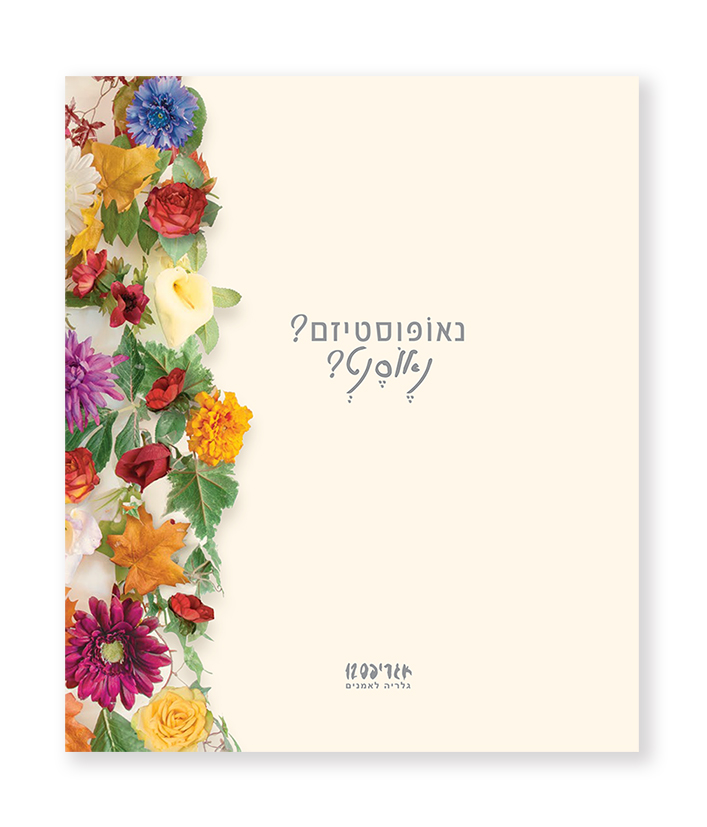



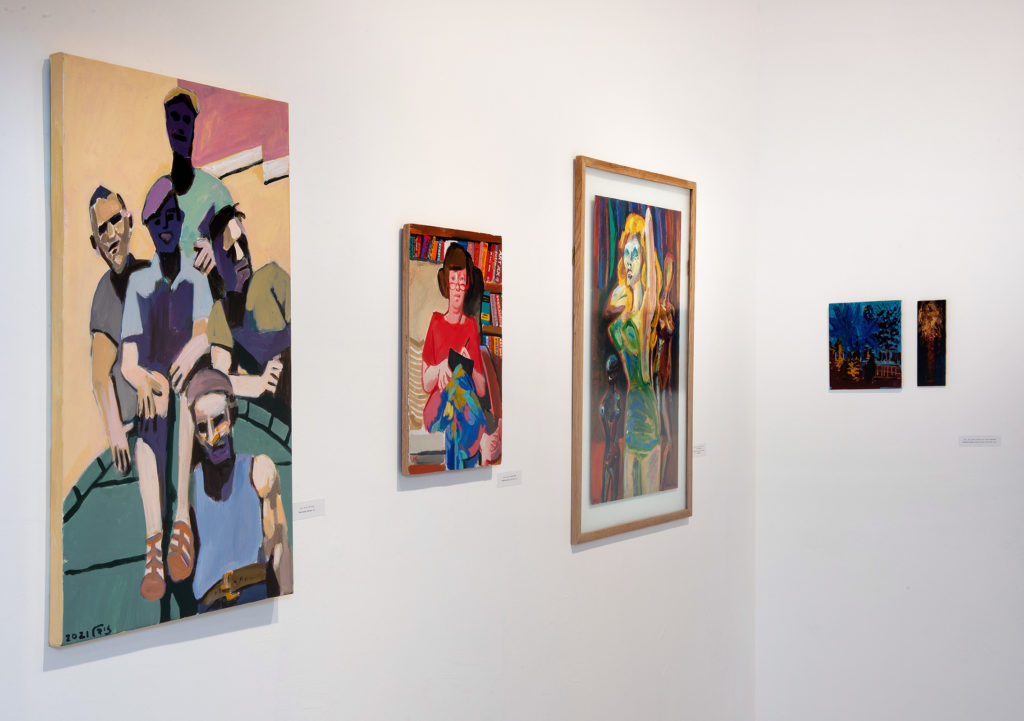
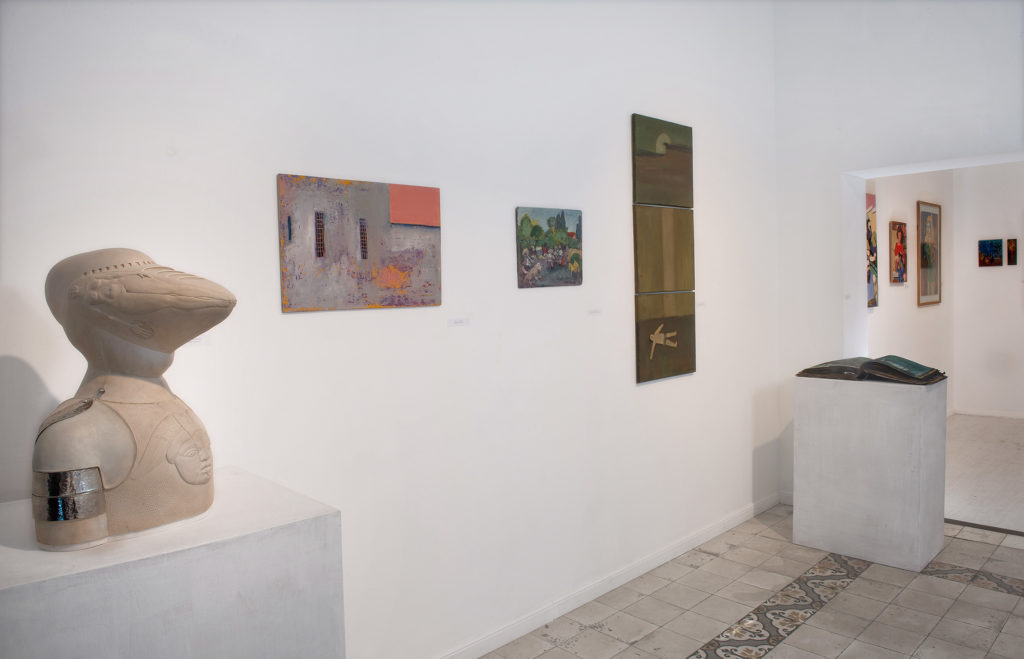
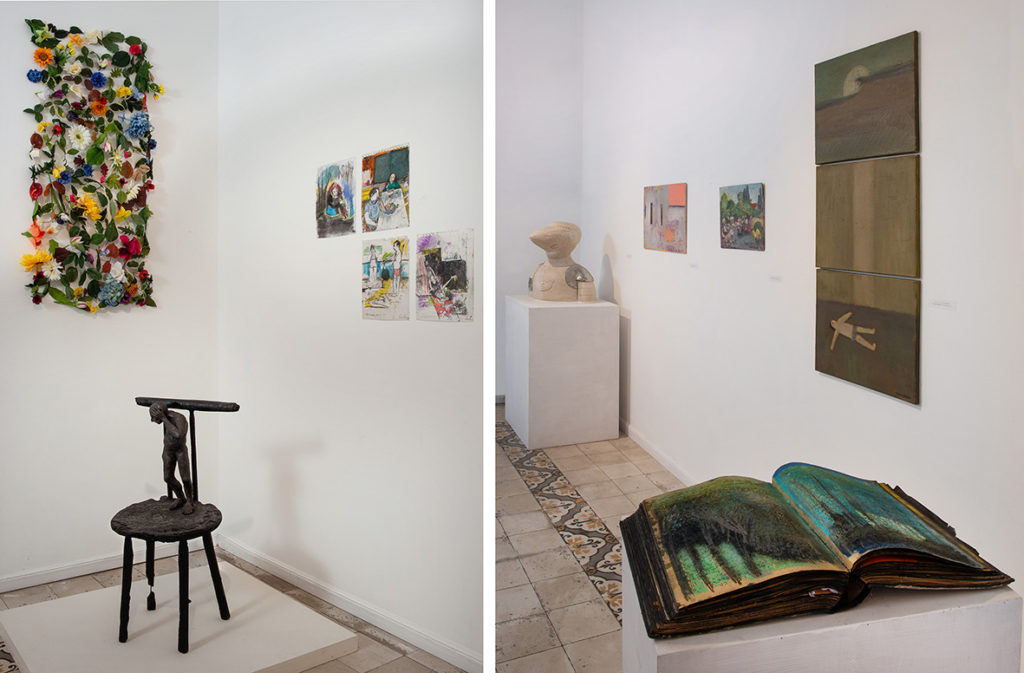

מתוך פתיחת התערוכה: נאוֹפּוסטיזם? נֶאוֹסֶנְט?
